Diversity, Inclusion, and Belonging in the Workplace Essay
Introduction.
Workplace inclusion, diversity, and belonging have developed into crucial components of a philosophy that permeates all enterprises. Due to the value they provide, hose concepts swiftly ascend to the forefront of enterprises’ priorities. They not only help to create more content, open-minded, and productive staff, but they also enhance the financial performance of the companies. Nevertheless, building a multicultural and welcoming work atmosphere remains one of today’s greatest difficulties. It requires more than a training film or a talk on being kind to employees to achieve real diversity and inclusion. Numerous reputable firms have been making efforts to establish, enhance, and continuously monitor these values on a variety of fronts, including employment, promotions, opportunities, conduct, and more. The commercial argument for this is becoming more widely understood. Although social justice is frequently the driving force behind these initiatives, businesses have started to see belonging, inclusion, and diversity as key success factors, more particularly, as crucial facilitators of development.
There are three main concepts that serve as the base for the paper – inclusivity, diversity, and belonging. Included are people’s participation and empowerment. People are valued and respected when they are included. When they are their true selves, employees perform at their best. One has to feel included in order to be one’s true self. In the workplace, diversity contains all aspects of the human experience, including ethnicity, financial background, community, gender and sexual identity, religion, and culture. It necessitates the eradication of all prejudices and the use of exclusively merit-based hiring. When an employee feels accepted, included, and has a sense of identification with a particular organization, group, or location, they are said to have a sense of belonging, which is a sense of safety and support (Traavik, 2019). Employee perceptions of their reception among coworkers and inclusion for suitable changes, activities, and more are influenced by how they feel appreciated, acknowledged, and included at work. Thus, the paper aims to provide a reflection on the three critical workplace factors and analyze their role and importance in the organization.
In order to get a deeper understanding of diversity and inclusivity, there is an example of an incident that happened at Google regarding those issues. A former Google employee filed a lawsuit against the business on Friday, alleging that it routinely discriminated against Black employees by assigning them to lower-level positions, underpaying them, and depriving them of advancement prospects. April Curley, who was employed at Google since 2014 before being fired in 2020, is the complainant (Wakabayash, 2022). While working there, Ms. Curley created initiatives to attract candidates from historically Black institutions and universities, which assisted the corporation in hiring Black personnel. She claimed that “Google maintains employment rules and procedures that have a discriminatory impact against Black employees all across the United States and is involved in a countrywide pattern or practice of deliberate race discrimination and retaliation (Wakabayash, 2022). According to the lawsuit, Google often employed Black employees with lower job statuses than were suitable for their level of expertise (Wakabayash, 2022). Pay is linked to work for groups; hence the business was able to pay Black employees less than their white counterparts.
The lawsuit reflects several grievances Black workers have made throughout the years regarding working at Google. Even as it expanded into one of the biggest private companies in the country, the business has had trouble diversifying its workforce in terms of race and gender, particularly among its highly compensated engineering personnel. 4.4% of Google’s U.S. employees were of different ethnicities, one of which is Black, which is much less than the national average for content creation and search organizations (Wakabayash, 2022). Ms. Curley also claimed that her workplace was unfriendly. She said that during the course of her six years there, bosses frequently confused her with two other Black coworkers. She said that a boss had asked which of her coworkers she desired to have an intimate relationship with and that neither she nor those coworkers had been given the opportunity to speak or present at crucial meetings. Eventually, Ms. Curley got a decrease in wage and was fired.
However, this experience positively impacted the organization’s approach toward diversity and stimulated it to work on more effective practices. By 2021, they have increased the leadership representation of ethnic minorities by 30%, and by 2025, management expects to have doubled Black+ representation across all of our U.S. locations. Google is concentrating on a lot more than hiring as we work toward our representation objectives. To enhance hiring, advancement, and engagement for disadvantaged minorities at Google, our recruitment leaders collaborate closely with internal organizations such as Black Googler Network. New onboarding initiatives are being introduced to all members of the program. In addition, the company strives to help Googlers experience the new, improved mental health services and internal mentoring initiatives.
During the observation of the situation, I experienced certain feelings connected with the diverse and inclusive practices in the company. The most frustrating fact is that Google seemed to have more focus on the image of the progressive company when it was not reflecting the reality. Moreover, it is highly possible that not only Google but other organization that portrays themselves as diverse companies follow the same pattern. If such a huge corporation still does not manage to ensure the well-being of all the employees and implement innovative practices, then the overall situation in the workplace might not be positive. It is devastating that usually, it is hard or even impossible to say if the certain company follows the chosen direction or only pretends to work on the issue. Mostly, due to the employees that have the courage to speak to the public about the inappropriate situations happening in the workplace, people can recognize if the company does any actions.
This incident reflects the major problem that exists in society, and even despite any personal beliefs and biases, it is still a relevant issue. Regarding my personal values, I strongly stand for inclusivity and diversity in general, and I feel that there should be a lot more for people of color and all minorities. For instance, the framework of belonging is something that I use in evaluating the case. Employees should feel accepted and valued in the company, whose ultimate goal is to provide a safe and secure environment for work. Unfortunately, there were signs that black employees do have such a positive experience in the company, which means that there are certain problems with diversity and inclusivity.

Observation Summary and Experience
Although I have never experienced anything like that personally, I have read articles and news about such cases in the companies. Even though I did not witness or experience such problems as inclusivity, I learned through the media and conversations with minority representatives about such cases. All the time, the conditions were rather similar when the companies claimed that they stand for inclusivity, but inside, employees experienced discrimination.
Google, for example, demonstrated certain disruptive behavioral patterns in this situation. Although the corporation aimed to hire more black people, the positions that were offered to them were significantly lower than for other ethnicities (Lopez, n.d.). I examined the case through the concept of diversity and inclusion, which was significant in evaluating the incident. Some of the skills regarding those concepts that were useful are openness. Openness to many different types of thoughts, experiences, methods, and practices retains curiosity when faced with something novel, strange, or distinct. It helps to be receptive to new ideas and potential biases. Moreover, being open to new ideas and perspectives enables us to solve challenging issues. In addition, it would be helpful to view the situations from different perspectives and broaden the sphere of perception. Taking into account what someone else could be feeling or thinking and actively looking for other points of view to help in decision-making and problem-solving, holding a variety of truths. Empowering decision-making and voices across a diverse spectrum of identities by adopting a different perspective allows for better comprehension of cultural variances and fosters justice and belonging. Those skills will be useful; for example, I evaluate the organizational performance regarding inclusivity and diversity.
Significant Factors Underlying the Experience or Observation
The major factor that underlines the observation is the existence of quantity, but not the quality of the diversity practices. The company hired racial minorities but failed to provide them with opportunities for development and made them experience a lack of sense of belonging (Adejumo, (2021). The experience was driven by compliance since Google’s statement did not manage the actions. The situation was beneficial for the organization even though they were sued by the ex-employee; it made them reconstruct the way the professional responsibilities were distributed among the racial minorities. Thus, eventually, it had positive results on the corporation’s culture and values. Diversity and inclusivity are a priority at the CEO level, and they are valued at all organizational levels of management from the concept of inclusion.
Reconstructing – Reconstruction of Future Practice or Professional Understanding
From the case of Google, I have learned that the company’s purposes and actions do not always match each other. It is important to evaluate not only the visible outcomes but look deeper into what is happening inside the organization. Through the concepts of diversity, inclusion, and belonging, I would suggest certain methods for the improvement of the situation in the company. Firstly, increasing cultural variety provides insights into fostering well-being for all people and utilizing diversity’s advantages at work, which improves performance (Krause, 2019). Secondly, position advertising can explicitly mention the purpose of hiring and retaining a multicultural workforce that provides an inclusive atmosphere in order to improve and encourage candidate pool diversity (Martinez-Acosta & Favero, 2018). Finally, bullying occurs often in this context, whether it occurs at work, in social settings, or in an educational environment. It is crucial to inform workers about the value of inclusion and diversity of all kinds (Prayson & Rowe, 2019). People need to believe there is a place they can turn to for support and assistance if they are being bullied, and such conduct has to be handled immediately.
Overall, the paper provided a reflection on the three critical workplace factors such as diversity, inclusivity, and belonging, and analyzed their role and importance in the organization. Those frameworks are necessary to apply to ensure the development and productivity of the organization along as well being of each employee. Although companies try to use some methods to promote diversity, it may not be enough for full inclusion and requires more work and strategic planning. Eventually, it benefits not only the employee but the corporation themselves due to the greater variety of people in the workplace with different backgrounds and creative perspectives.
Wakabayash, D. (2022). The lawsuit accuses Google of bias against black employees. New-York Times. Web.
Lopez, C. How we’re making progress on our representation goals . (n.d.). Google Belonging. Web.
Krause, W. (2019). Leading in times of cultural diversity: Achieving wellbeing, inclusivity, and organizational performance. In The Routledge companion to management and workplace spirituality (pp. 250-260). Routledge.
Martinez-Acosta, V. G., & Favero, C. B. (2018). A discussion of diversity and inclusivity at the institutional level: The need for a strategic plan. Journal of Undergraduate Neuroscience Education , 16 (3), A252.
Prayson, R. A., & Rowe, J. J. (2019). LGBTQ Inclusivity and Language in the Workplace. Critical Values , 12 (2), 28-30. Web.
Adejumo, V. (2021). Beyond diversity, inclusion, and belonging. Leadership , 17 (1), 62-73.
Traavik, L. E. (2019). Where differences dwell: inclusion and the healthy workplace. In Creating psychologically healthy workplaces (pp. 215-234). Edward Elgar Publishing. Web.
- Chicago (A-D)
- Chicago (N-B)
IvyPanda. (2023, October 21). Diversity, Inclusion, and Belonging in the Workplace. https://ivypanda.com/essays/diversity-inclusion-and-belonging-in-the-workplace/
"Diversity, Inclusion, and Belonging in the Workplace." IvyPanda , 21 Oct. 2023, ivypanda.com/essays/diversity-inclusion-and-belonging-in-the-workplace/.
IvyPanda . (2023) 'Diversity, Inclusion, and Belonging in the Workplace'. 21 October.
IvyPanda . 2023. "Diversity, Inclusion, and Belonging in the Workplace." October 21, 2023. https://ivypanda.com/essays/diversity-inclusion-and-belonging-in-the-workplace/.
1. IvyPanda . "Diversity, Inclusion, and Belonging in the Workplace." October 21, 2023. https://ivypanda.com/essays/diversity-inclusion-and-belonging-in-the-workplace/.
Bibliography
IvyPanda . "Diversity, Inclusion, and Belonging in the Workplace." October 21, 2023. https://ivypanda.com/essays/diversity-inclusion-and-belonging-in-the-workplace/.
- Curley Effects on the Politics of Boston
- Of Mice and Men by John Steinbeck
- “Pity The Children” by Taylor Phil
- Penn State Scandal Analysis: Sandusky Case
- Characters in "An Inspector Calls" and "Of Mice and Men"
- Fitzgerald’s ‘The Great Gatsby’, Steinbeck’s ‘Of Mice and Men’ and the American Dream
- Practicing Racial Inclusivity Strategies in Organization
- Inclusivity and Accountability in UW Advancement
- The Task Force on Inclusivity and Diversity
- Transgender Inclusivity in Higher Education
- Workplace Environment Assessment: Case Study
- Operational Assessments in the Workplace
- Workplace Conflict Gap Analysis
- Individual Action Plan: Organizational Behavior
- The P&O Ferries Firm's Staff Management
May 8, 2023
Celebrating Our Differences: Inspiring Essays on Diversity and Inclusion
Ready to celebrate diversity and inclusion? Discover how to craft an exceptional essay on this important topic with our expert tips and real-world examples. Join us as we explore the power of diversity and its impact on individuals and communities alike.
Imagine yourself walking into a room full of people, each with their own stories to tell. What makes your story stand out? What makes your voice unique? This is the essence of a good diversity essay .
In your essay, you have the opportunity to show the admissions committee how your life experiences have shaped your perspective, identity, and aspirations. Through sharing personal stories, you can paint a picture of who you are and how you will contribute to the vibrant tapestry of the campus community.
Maybe it's growing up in a multicultural household that has taught you to value different perspectives and ways of life. Or, perhaps it's overcoming adversity and facing challenges that have made you a more empathetic and resilient person. Whatever your story may be, your diversity essay is a chance to showcase the richness and depth of your lived experiences.
As you craft your essay, think about how your unique background has informed your actions, beliefs, and goals. Share specific examples and anecdotes that bring your story to life, and make sure to emphasize how you will use your diverse perspective to contribute positively to the campus community. With a well-written diversity essay, you can show the admissions committee that you are more than just a set of grades and test scores - you are a unique and valuable addition to their community.
We have provided a guide as well as some essay examples to assist you in writing your essay about diversity. If you need inspiration for an essay, read them till last. But before we dig into the specifics, a basic understanding of diversity is necessary.
What is Diversity in actuality?
institutions. By recognizing and celebrating the unique experiences, viewpoints, and identities of students from diverse backgrounds, schools can create a more inclusive and welcoming environment that benefits everyone. Through diversity essays, students have the opportunity to showcase the strength of diversity and how it can contribute to the greater community.
Scholarship options designed for historically underserved communities also demonstrate the importance of diversity in leveling the playing field and creating opportunities for all. Therefore, embracing diversity can lead to a stronger and more vibrant academic community.
What is Inclusion?
Inclusion is the practice of making a place where everyone, despite their differences, is treated with dignity and respect . It's the act of making sure nobody is held back from contributing to a group or community because of their identity or background.
Each person's race, ethnicity, gender identity, sexual orientation, financial background, ability, religion, and other characteristics are valued and celebrated through the practice of inclusion. It's not enough to just tolerate differences; we need to celebrate them and foster communities where everyone can feel safe and included.
To advance social justice and equity, inclusion is crucial. It allows people from all walks of life to meet one another, learn from one another, and work together towards a shared objective. Positive results for individuals and communities can result from their inclusion in more open, welcoming, and supportive settings.
Step-by-Step guide on how to write an essay on diversity and inclusion
Writing an essay on diversity and inclusion is an important task that requires careful planning and execution. In this step-by-step guide, we will provide you with a roadmap on how to write a compelling essay on this topic.
Here are seven suggestions to consider as you write your diversity statement.
Tell your story
Highlight any challenges you had to overcome while writing an essay. Tell the world about how you used to have to lug two 20-pound sacks of rice uphill to school every day. Recognize your privilege if you were born into affluence. Either way, you can utilize your experience to demonstrate your ability to empathize with kids who struggle to complete their education.
Focus on commonly accepted understandings of diversity and inclusiveness
Issues of race, gender, class, and sexual orientation should be given special attention. Don't try to soften your stance by mentioning, for example, how challenging it is to be a Kansan in Missouri. Write about racism, sexism, homophobia, transphobia, ableism, or another form of oppression that is well-known instead.
Avoid false parallels
When writing a diversity essay, it is important to avoid false parallels. False parallels are when two things appear to be similar, but in reality, they are different. To avoid false parallels, you must carefully examine the similarities and differences between the two things you are comparing. This will help you to make accurate and meaningful comparisons, which will ultimately strengthen your diversity essay.
Write about specific things you have done to help students from underrepresented backgrounds succeed
If you've never helped anybody before, now is the time to start. Become involved as a tutor at a low-performing school, help Habitat for Humanity construct homes, or adopt an antiracist pedagogical approach in your classroom. Not only will you gain valuable experience, but you can also use it to strengthen your diversity statement.
Highlight any programs for underrepresented students you’ve participated in
If you have participated in any programs for underrepresented students, be sure to highlight them in your essay on diversity. This could include programs focused on increasing access to education for students from disadvantaged backgrounds, mentorship or internship programs for underrepresented groups, or community service initiatives aimed at promoting diversity and inclusion.
By highlighting these programs, you can showcase your commitment to diversity and demonstrate how you have taken active steps to promote equity and inclusion in your community.
Write about your commitment to working toward achieving equity and enhancing diversity
Provide details on what you can bring to the table. You might express your desire to help existing programmes on campus or to start something brand new inspired by what you've seen elsewhere.
Modify your statement based on where you are sending it
When writing an essay on diversity, it's important to tailor your statement to the specific institution or audience you are addressing. Modifying your statement based on where you are sending it shows that you have taken the time to research the institution and understand its values and priorities. This can increase the likelihood of your statement resonating with the reader and ultimately being successful in achieving your goals.
3 Example essays on Diversity and Inclusion
The importance of diversity workforce, introduction.
Workforce diversity is a critical aspect of modern-day organizations. It involves hiring individuals from different backgrounds, cultures, ethnicities, genders, and ages. The concept of workforce diversity is gaining prominence as organizations are increasingly recognizing the benefits of having a diverse workforce. In this essay, we will explore the importance of workforce diversity, the challenges associated with it, and the benefits it offers.
Encourages Innovation and Creativity
Diversity brings together a wide range of perspectives and ideas that can help drive innovation and creativity. When people from diverse backgrounds come together, they can offer different viewpoints and ideas, leading to new solutions to problems.
Enhances Employee Engagement and Retention
Employees who feel included and valued are more engaged and motivated, leading to higher retention rates. When employees feel they belong and are appreciated, they are more likely to stay with the organization, reducing turnover costs.
Increases Global Competitiveness
Diversity in the workforce is crucial for organizations looking to expand globally. Organizations with a diverse workforce are better equipped to understand and navigate the cultural nuances of different countries and regions, making them more competitive in the global marketplace.
Promotes a Positive Image
Organizations that embrace diversity are viewed positively by the public, customers, and employees. A diverse workforce demonstrates that the organization values and respects individuals from all backgrounds, contributing to a positive brand image.
Resistance to Change
Implementing diversity initiatives can be met with resistance, particularly from those who believe that the traditional way of doing things is the best. It is essential to educate and raise awareness about the benefits of diversity to overcome this challenge.
Communication Barriers
When individuals from different backgrounds come together, there may be communication barriers due to language or cultural differences. It is essential to provide training and resources to overcome these barriers and foster effective communication.
Stereotyping and Bias
Stereotyping and bias can negatively impact diversity initiatives. It is essential to establish a culture of inclusivity and respect, where individuals feel valued and appreciated for their unique contributions.
Improved Decision-Making
A diverse workforce can provide a range of perspectives, leading to better decision-making. When individuals with different backgrounds come together, they can offer different viewpoints, leading to a more comprehensive and well-rounded decision-making process.
Increased Creativity and Innovation
Diversity can lead to new ideas and perspectives that can drive innovation and creativity. A diverse workforce can bring together different viewpoints and experiences, leading to new solutions to problems.
Enhanced Reputation
Improved Employee Engagement and Retention
When employees feel included and valued, they are more engaged and motivated, leading to higher retention rates. A diverse workforce can help create a sense of belonging, leading to improved employee engagement and retention.
Workforce diversity is crucial for modern-day organizations. It can lead to improved decision-making, increased creativity and innovation, and enhanced reputation. However, diversity initiatives can be met with resistance, communication barriers, stereotyping, and bias. It is essential to establish a culture of inclusivity and respect, where individuals feel valued and appreciated for their unique contributions. By embracing diversity, organizations can create a more productive, engaged, and innovative workforce.
2. The challenges of diversity in different institutions
Diversity is a term that describes the differences among people, whether they are cultural, ethnic, racial, linguistic, gender, or sexual orientation differences. While diversity is often celebrated, it can also pose challenges, especially in institutions such as schools, workplaces, and governments. This essay will explore the challenges of diversity in different institutions and how they can be addressed.
Challenges of Diversity in Schools
Schools are meant to be places where students can learn and grow, but diversity can sometimes be a challenge. Students who come from different backgrounds may face discrimination and exclusion from their peers, which can affect their ability to learn and thrive.
Teachers may also struggle to provide a curriculum that is inclusive of all students experiences and perspectives. Addressing these challenges requires a commitment to creating an inclusive environment where all students feel valued and respected.
Challenges of Diversity in the Workplace
Workplaces are becoming increasingly diverse, but this diversity can pose challenges. Employees from different cultural backgrounds may struggle to communicate effectively or may feel excluded from the workplace culture. Discrimination and bias can also be a problem, as can the assumption that everyone shares the same experiences and perspectives. To address these challenges, employers need to be proactive in creating a workplace culture that values diversity and promotes inclusivity. This can involve training and education for employees, as well as policies and procedures that support diversity and inclusion.
Challenges of Diversity in Government
Governments are responsible for serving diverse populations, but this can be a challenge. Members of different cultural and linguistic groups may have different needs and expectations from their government, and some groups may face discrimination or exclusion.
To address these challenges, governments need to be proactive in engaging with diverse communities and ensuring that their policies and programs are inclusive. This can involve outreach and consultation with community groups, as well as the development of policies that reflect the needs and perspectives of diverse communities.
Ways to Address the Challenges of Diversity
Addressing the challenges of diversity requires a commitment to creating inclusive environments where all individuals feel valued and respected. This can involve several strategies, including education and training, policies and procedures, and community engagement.
Education and training can help individuals better understand the experiences and perspectives of those from different backgrounds. This can involve training programs for employees or professional development opportunities for teachers. It can also involve curriculum changes in schools that better reflect the experiences and perspectives of diverse students.
Policies and procedures can also play a role in promoting diversity and inclusion. This can involve policies that prohibit discrimination and harassment in the workplace or schools. It can also involve policies that promote diversity in hiring or that ensure that government programs and services are inclusive of all members of the community.
Community engagement is also an important strategy for promoting diversity and inclusion. This can involve outreach to community groups and the development of partnerships with organizations that serve diverse communities. It can also involve the creation of advisory committees or other mechanisms for engaging with diverse populations.
In conclusion, diversity is an important aspect of our society, but it can also pose challenges in different institutions. Schools, workplaces, and governments need to be proactive in creating inclusive environments where all individuals feel valued and respected. This requires a commitment to education and training, policies and procedures that promote diversity and inclusion, and community engagement. By addressing the challenges of diversity, we can create a more equitable and inclusive society for all.
3. Ideas on how to Reduce Discrimination in Society
Racial discrimination is a pervasive issue that has plagued society for centuries. It is a problem that continues to affect individuals and communities around the world. Discrimination is an act that denies individuals equal rights, opportunities, and treatment based on their race or ethnicity. The impacts of racism are far-reaching, and it affects individuals' economic, social, and emotional well-being. Therefore, there is a need for collective efforts to reduce racial discrimination and promote social justice. This essay discusses some of the best ways to reduce racial discrimination in society.
Education and Awareness
Education is a powerful tool that can help reduce racial discrimination. Education is essential in teaching individuals about diversity, equity, and inclusion. When people understand the impact of racism, they are more likely to become allies and advocates for change. Education can take many forms, such as books, documentaries, and workshops.
Institutions can also incorporate cultural competency training into their curriculum to educate students and faculty members about the impact of discrimination. It is essential to recognize the different forms of discrimination, including implicit bias, microaggressions, and institutional racism, to address them appropriately.
Political Action
Political action is another way to reduce racial discrimination in society. Leaders at the local, state, and federal levels can enact policies that promote equality and diversity. Policies such as affirmative action and diversity initiatives can promote inclusion in the workforce and educational institutions.
Politicians can also pass laws that make racial discrimination illegal and provide support to victims of discrimination. It is essential to recognize that racism is a systemic issue that requires political action to address.
Community Engagement
Community engagement is an important way to reduce racial discrimination. Building strong communities that are inclusive and diverse can help reduce racism. Communities can engage in activities that promote diversity, such as cultural festivals, food fairs, and art exhibits.
These events can help build bridges between different communities and promote understanding. Community members can also engage in conversations about racism and work together to address it. This can create a sense of belonging and unity that can help reduce discrimination.
Diversity in Institutions
Institutions play a significant role in reducing racial discrimination. Institutions such as schools, businesses, and government agencies can promote diversity by recruiting and retaining individuals from diverse backgrounds. A diverse workforce or student body can help reduce discrimination by promoting inclusion and understanding.
Institutions can also create policies that promote equality and diversity, such as flexible work arrangements, diversity training, and bias reporting systems. It is important to ensure that institutions are representative of the communities they serve to reduce discrimination.
In conclusion, reducing racial discrimination requires a collective effort from individuals, institutions, and political leaders. Education and awareness, political action, community engagement, and diversity in institutions are all effective ways to address discrimination. It is important to recognize that reducing discrimination is a long-term effort that requires commitment and perseverance. By working together, we can create a more inclusive and equitable society that values diversity and promotes social justice.
Final Words
In conclusion, embracing diversity and inclusion is crucial for creating a more equitable and harmonious society. Whether it's through recognizing and celebrating racial diversity and cultural diversity, fostering a sense of belonging for all individuals, or actively working to combat discrimination and prejudice, we must prioritize these values in all aspects of our lives. By championing diversity and inclusion, we can cultivate a richer, more vibrant world that values the unique perspectives and experiences of all people. By embracing diversity and inclusion, we can build a better future for ourselves and for generations to come.
If you are tired of struggling to write essays on diversity and inclusion and find yourself running short on time and needing assistance to meet your deadline then go for Jenni.ai! This powerful AI tool can help you write an essay in a matter of minutes. Jenni.ai eliminates the stress and pressure of essay writing, allowing you to produce high-quality content quickly and efficiently. With its innovative technology, you can enjoy originality and coherence in your writing without spending hours of writer’s block. Sign up for Jenni.ai today and take your writing to the next level!
Try Jenni for free today
Create your first piece of content with Jenni today and never look back
Have a language expert improve your writing
Check your paper for plagiarism in 10 minutes, generate your apa citations for free.
- Knowledge Base
- College essay
- How to Write a Diversity Essay | Tips & Examples
How to Write a Diversity Essay | Tips & Examples
Published on November 1, 2021 by Kirsten Courault . Revised on May 31, 2023.
Table of contents
What is a diversity essay, identify how you will enrich the campus community, share stories about your lived experience, explain how your background or identity has affected your life, other interesting articles, frequently asked questions about college application essays.
Diversity essays ask students to highlight an important aspect of their identity, background, culture, experience, viewpoints, beliefs, skills, passions, goals, etc.
Diversity essays can come in many forms. Some scholarships are offered specifically for students who come from an underrepresented background or identity in higher education. At highly competitive schools, supplemental diversity essays require students to address how they will enhance the student body with a unique perspective, identity, or background.
In the Common Application and applications for several other colleges, some main essay prompts ask about how your background, identity, or experience has affected you.
Why schools want a diversity essay
Many universities believe a student body representing different perspectives, beliefs, identities, and backgrounds will enhance the campus learning and community experience.
Admissions officers are interested in hearing about how your unique background, identity, beliefs, culture, or characteristics will enrich the campus community.
Through the diversity essay, admissions officers want students to articulate the following:
- What makes them different from other applicants
- Stories related to their background, identity, or experience
- How their unique lived experience has affected their outlook, activities, and goals
Prevent plagiarism. Run a free check.
Think about what aspects of your identity or background make you unique, and choose one that has significantly impacted your life.
For some students, it may be easy to identify what sets them apart from their peers. But if you’re having trouble identifying what makes you different from other applicants, consider your life from an outsider’s perspective. Don’t presume your lived experiences are normal or boring just because you’re used to them.
Some examples of identities or experiences that you might write about include the following:
- Race/ethnicity
- Gender identity
- Sexual orientation
- Nationality
- Socioeconomic status
- Immigration background
- Religion/belief system
- Place of residence
- Family circumstances
- Extracurricular activities related to diversity
Include vulnerable, authentic stories about your lived experiences. Maintain focus on your experience rather than going into too much detail comparing yourself to others or describing their experiences.
Keep the focus on you
Tell a story about how your background, identity, or experience has impacted you. While you can briefly mention another person’s experience to provide context, be sure to keep the essay focused on you. Admissions officers are mostly interested in learning about your lived experience, not anyone else’s.
When I was a baby, my grandmother took me in, even though that meant postponing her retirement and continuing to work full-time at the local hairdresser. Even working every shift she could, she never missed a single school play or soccer game.
She and I had a really special bond, even creating our own special language to leave each other secret notes and messages. She always pushed me to succeed in school, and celebrated every academic achievement like it was worthy of a Nobel Prize. Every month, any leftover tip money she received at work went to a special 509 savings plan for my college education.
When I was in the 10th grade, my grandmother was diagnosed with ALS. We didn’t have health insurance, and what began with quitting soccer eventually led to dropping out of school as her condition worsened. In between her doctor’s appointments, keeping the house tidy, and keeping her comfortable, I took advantage of those few free moments to study for the GED.
In school pictures at Raleigh Elementary School, you could immediately spot me as “that Asian girl.” At lunch, I used to bring leftover fun see noodles, but after my classmates remarked how they smelled disgusting, I begged my mom to make a “regular” lunch of sliced bread, mayonnaise, and deli meat.
Although born and raised in North Carolina, I felt a cultural obligation to learn my “mother tongue” and reconnect with my “homeland.” After two years of all-day Saturday Chinese school, I finally visited Beijing for the first time, expecting I would finally belong. While my face initially assured locals of my Chinese identity, the moment I spoke, my cover was blown. My Chinese was littered with tonal errors, and I was instantly labeled as an “ABC,” American-born Chinese.
I felt culturally homeless.
Speak from your own experience
Highlight your actions, difficulties, and feelings rather than comparing yourself to others. While it may be tempting to write about how you have been more or less fortunate than those around you, keep the focus on you and your unique experiences, as shown below.
I began to despair when the FAFSA website once again filled with red error messages.
I had been at the local library for hours and hadn’t even been able to finish the form, much less the other to-do items for my application.
I am the first person in my family to even consider going to college. My parents work two jobs each, but even then, it’s sometimes very hard to make ends meet. Rather than playing soccer or competing in speech and debate, I help my family by taking care of my younger siblings after school and on the weekends.
“We only speak one language here. Speak proper English!” roared a store owner when I had attempted to buy bread and accidentally used the wrong preposition.
In middle school, I had relentlessly studied English grammar textbooks and received the highest marks.
Leaving Seoul was hard, but living in West Orange, New Jersey was much harder一especially navigating everyday communication with Americans.
After sharing relevant personal stories, make sure to provide insight into how your lived experience has influenced your perspective, activities, and goals. You should also explain how your background led you to apply to this university and why you’re a good fit.
Include your outlook, actions, and goals
Conclude your essay with an insight about how your background or identity has affected your outlook, actions, and goals. You should include specific actions and activities that you have done as a result of your insight.
One night, before the midnight premiere of Avengers: Endgame , I stopped by my best friend Maria’s house. Her mother prepared tamales, churros, and Mexican hot chocolate, packing them all neatly in an Igloo lunch box. As we sat in the line snaking around the AMC theater, I thought back to when Maria and I took salsa classes together and when we belted out Selena’s “Bidi Bidi Bom Bom” at karaoke. In that moment, as I munched on a chicken tamale, I realized how much I admired the beauty, complexity, and joy in Maria’s culture but had suppressed and devalued my own.
The following semester, I joined Model UN. Since then, I have learned how to proudly represent other countries and have gained cultural perspectives other than my own. I now understand that all cultures, including my own, are equal. I still struggle with small triggers, like when I go through airport security and feel a suspicious glance toward me, or when I feel self-conscious for bringing kabsa to school lunch. But in the future, I hope to study and work in international relations to continue learning about other cultures and impart a positive impression of Saudi culture to the world.
The smell of the early morning dew and the welcoming whinnies of my family’s horses are some of my most treasured childhood memories. To this day, our farm remains so rural that we do not have broadband access, and we’re too far away from the closest town for the postal service to reach us.
Going to school regularly was always a struggle: between the unceasing demands of the farm and our lack of connectivity, it was hard to keep up with my studies. Despite being a voracious reader, avid amateur chemist, and active participant in the classroom, emergencies and unforeseen events at the farm meant that I had a lot of unexcused absences.
Although it had challenges, my upbringing taught me resilience, the value of hard work, and the importance of family. Staying up all night to watch a foal being born, successfully saving the animals from a minor fire, and finding ways to soothe a nervous mare afraid of thunder have led to an unbreakable family bond.
Our farm is my family’s birthright and our livelihood, and I am eager to learn how to ensure the farm’s financial and technological success for future generations. In college, I am looking forward to joining a chapter of Future Farmers of America and studying agricultural business to carry my family’s legacy forward.
Tailor your answer to the university
After explaining how your identity or background will enrich the university’s existing student body, you can mention the university organizations, groups, or courses in which you’re interested.
Maybe a larger public school setting will allow you to broaden your community, or a small liberal arts college has a specialized program that will give you space to discover your voice and identity. Perhaps this particular university has an active affinity group you’d like to join.
Demonstrating how a university’s specific programs or clubs are relevant to you can show that you’ve done your research and would be a great addition to the university.
At the University of Michigan Engineering, I want to study engineering not only to emulate my mother’s achievements and strength, but also to forge my own path as an engineer with disabilities. I appreciate the University of Michigan’s long-standing dedication to supporting students with disabilities in ways ranging from accessible housing to assistive technology. At the University of Michigan Engineering, I want to receive a top-notch education and use it to inspire others to strive for their best, regardless of their circumstances.
If you want to know more about academic writing , effective communication , or parts of speech , make sure to check out some of our other articles with explanations and examples.
Academic writing
- Writing process
- Transition words
- Passive voice
- Paraphrasing
Communication
- How to end an email
- Ms, mrs, miss
- How to start an email
- I hope this email finds you well
- Hope you are doing well
Parts of speech
- Personal pronouns
- Conjunctions
In addition to your main college essay , some schools and scholarships may ask for a supplementary essay focused on an aspect of your identity or background. This is sometimes called a diversity essay .
Many universities believe a student body composed of different perspectives, beliefs, identities, and backgrounds will enhance the campus learning and community experience.
Admissions officers are interested in hearing about how your unique background, identity, beliefs, culture, or characteristics will enrich the campus community, which is why they assign a diversity essay .
To write an effective diversity essay , include vulnerable, authentic stories about your unique identity, background, or perspective. Provide insight into how your lived experience has influenced your outlook, activities, and goals. If relevant, you should also mention how your background has led you to apply for this university and why you’re a good fit.
Cite this Scribbr article
If you want to cite this source, you can copy and paste the citation or click the “Cite this Scribbr article” button to automatically add the citation to our free Citation Generator.
Courault, K. (2023, May 31). How to Write a Diversity Essay | Tips & Examples. Scribbr. Retrieved April 2, 2024, from https://www.scribbr.com/college-essay/diversity-essay/
Is this article helpful?

Kirsten Courault
Other students also liked, how to write about yourself in a college essay | examples, what do colleges look for in an essay | examples & tips, how to write a scholarship essay | template & example, "i thought ai proofreading was useless but..".
I've been using Scribbr for years now and I know it's a service that won't disappoint. It does a good job spotting mistakes”
Read our research on: Abortion | International Conflict | Election 2024
Regions & Countries
Diversity, equity and inclusion in the workplace, a majority of u.s. workers say focusing on dei at work is a good thing, but relatively small shares place great importance on diversity in their own workplace.

Pew Research Center conducted this study to better understand how adults in the United States think about diversity, equity and inclusion efforts in the workplace. This analysis is based on survey responses from 4,744 U.S. adults who are working part time or full time, are not self-employed, have only one job or have multiple jobs but consider one their primary job, and whose company or organization has 10 or more people. The data was collected as part of a larger survey of workers conducted Feb. 6-12, 2023. Everyone who took part is a member of Pew Research Center’s American Trends Panel (ATP), an online survey panel that is recruited through national, random sampling of residential addresses. This way nearly all U.S. adults have a chance of selection. The survey is weighted to be representative of the U.S. adult population by gender, race, ethnicity, partisan affiliation, education and other categories. Read more about the ATP’s methodology .
Read more about the questions used for this report and the report’s methodology .
References to workers or employed adults include those who are employed part time or full time, are not self-employed, have only one job or have multiple jobs but consider one their primary job, and whose company or organization has 10 or more people.
References to White, Black and Asian adults include those who are not Hispanic and identify as only one race. Hispanics are of any race.
References to college graduates or people with a college degree comprise those with a bachelor’s degree or more. “Some college” includes those with an associate degree and those who attended college but did not obtain a degree.
References to disabled workers include those who say a disability or handicap keeps them from fully participating in work, school, housework or other activities.
All references to party affiliation include those who lean toward that party. Republicans include those who identify as Republicans and those who say they lean toward the Republican Party. Democrats include those who identify as Democrats and those who say they lean toward the Democratic Party.
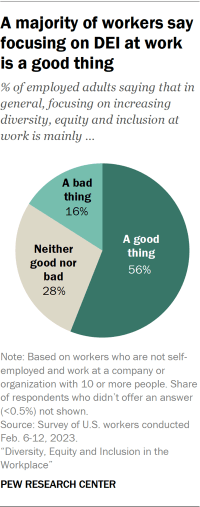
Workplace diversity, equity and inclusion efforts, or DEI, are increasingly becoming part of national political debates . For a majority of employed U.S. adults (56%), focusing on increasing DEI at work is a good thing, according to a new Pew Research Center survey. But opinions about DEI vary considerably along demographic and political lines.
Most workers have some experience with DEI measures at their workplace. About six-in-ten (61%) say their company or organization has policies that ensure fairness in hiring, pay or promotions, and 52% say they have trainings or meetings on DEI at work. Smaller shares say their workplace has a staff member who promotes DEI (33%), that their workplace offers salary transparency (30%), and that it has affinity groups or employee resource groups based on a shared identity (26%). Majorities of those who have access to these measures say each has had a positive impact where they work.
Related : How Americans View Their Jobs
The value of DEI efforts at work
The importance of a diverse workforce, dei measures and their impact, how gender, race and ethnicity impact success in the workplace.
This nationally representative survey of 5,902 U.S. workers, including 4,744 who are not self-employed, was conducted Feb. 6-12, 2023, using the Center’s American Trends Panel . 1 The survey comes at a time when DEI efforts are facing some backlash and many major companies are laying off their DEI professionals .
Some key findings from the survey:
- Relatively small shares of workers place a lot of importance on diversity at their workplace. About three-in-ten say it is extremely or very important to them to work somewhere with a mix of employees of different races and ethnicities (32%) or ages (28%). Roughly a quarter say the same about having a workplace with about an equal mix of men and women (26%) and 18% say this about a mix of employees of different sexual orientations.
- More than half of workers (54%) say their company or organization pays about the right amount of attention to increasing DEI. Smaller shares say their company or organization pays too much (14%) or too little attention (15%), and 17% say they’re not sure. Black workers are more likely than those in other racial and ethnic groups to say their employer pays too little attention to increasing DEI. They’re also among the most likely to say focusing on DEI at work is a good thing (78% of Black workers say this), while White workers are the least likely to express this view (47%).
- Women are more likely than men to value DEI at work. About six-in-ten women (61%) say focusing on increasing DEI at work is a good thing, compared with half of men. And larger shares of women than men say it’s extremely or very important to them to work at a place that is diverse when it comes to gender, race and ethnicity, age, and sexual orientation.
- There are wide partisan differences in views of workplace DEI. Most Democratic and Democratic-leaning workers (78%) say focusing on DEI at work is a good thing, compared with 30% of Republicans and Republican leaners. Democrats are also far more likely than Republicans to value different aspects of diversity. And by wide margins, higher shares of Democrats than Republicans say the policies and resources related to DEI available at their workplace have had a positive impact.
- Half of workers say it’s extremely or very important to them to work somewhere that is accessible for people with physical disabilities. About three-in-ten workers (29%) say this is somewhat important to them, and 21% say it’s not too or not at all important. A majority of workers (76% among those who do not work fully remotely) say their workplace is at least somewhat accessible for people with physical disabilities.
- Many say being a man or being White is an advantage where they work. The survey asked respondents whether a person’s gender, race or ethnicity makes it easier or harder to be successful where they work. Shares ranging from 45% to 57% say these traits make it neither easier nor harder. But far more say being a man and being White makes it easier than say it makes it harder for someone to be successful. Conversely, by double-digit margins, more say being a woman, being Black or being Hispanic makes it harder than say it makes it easier to be successful where they work.
A majority of workers (56%) say focusing on increasing diversity, equity and inclusion at work is mainly a good thing; 28% say it is neither good nor bad, and 16% say it is a bad thing. Views on this vary along key demographic and partisan lines.
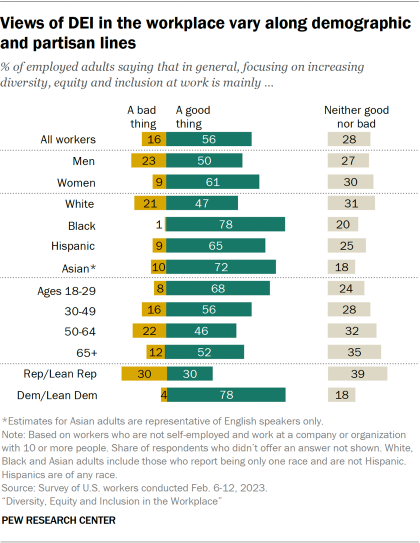
Half or more of both men and women say focusing on increasing DEI at work is a good thing, but women are more likely than men to offer this view (61% vs. 50%). In turn, men are more than twice as likely as women to say it is a bad thing (23% vs. 9%).
About two-thirds or more of Black (78%), Asian (72%) and Hispanic (65%) workers say that focusing on DEI at work is a good thing. Among White workers, however, fewer than half (47%) say it’s a good thing; in fact, 21% say it’s a bad thing. But there are wide partisan, gender and age gaps among White workers, with majorities of White Democrats, women and those under age 30 saying focusing on DEI at work is a good thing.
Workers under 30 are the most likely age group to say focusing on DEI at work is a good thing. About two-thirds (68%) of workers ages 18 to 29 say this, compared with 56% of workers 30 to 49, 46% of those 50 to 64, and 52% of those 65 and older.
Views also differ by educational attainment, with 68% of workers with a postgraduate degree saying focusing on DEI at work is a good thing, compared with 59% of those with a bachelor’s degree only and 50% of those with some college or less education.
Democratic and Democratic-leaning workers are much more likely to say focusing on DEI at work is a good thing (78%) than to say it is a bad thing (4%) or that it is neither good nor bad (18%). Views among Republican and Republican-leaning workers are more mixed: Some 30% say focusing on DEI at work is a good thing, while the same share (30%) say it’s a bad thing, and 39% say it’s neither good nor bad.
A majority of workers say their employer pays the right amount of attention to DEI
When it comes to the focus of their own employer, 54% of workers say their company or organization pays about the right amount of attention to increasing diversity, equity and inclusion. The remainder are divided between saying their employer pays too much (14%) or too little attention (15%), or that they’re not sure (17%).
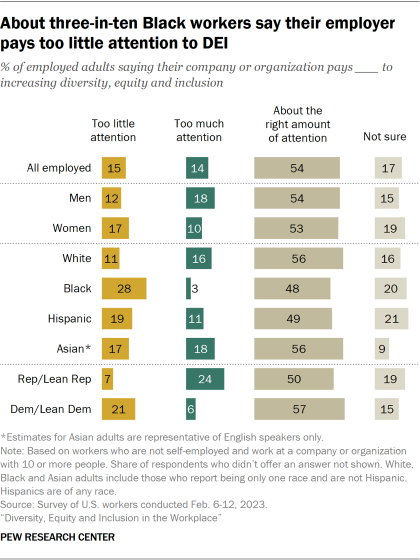
Women are more likely than men to say their employer pays too little attention to increasing DEI (17% vs. 12%). In turn, men are more likely than women to say too much attention is paid to this where they work (18% vs. 10%).
Black workers (28%) are the most likely to say their company or organization pays too little attention to increasing DEI, compared with smaller shares of White (11%), Hispanic (19%) and Asian (17%) workers who say the same.
Views on this question also differ by party. While half or more of both Republican and Democratic workers say their company or organization pays the right amount of attention to DEI, Democrats are more likely than Republicans to say their employer pays too little attention to it (21% vs. 7%). In turn, Republicans are more likely than Democrats to say their employer pays too much attention to DEI (24% vs. 6%).
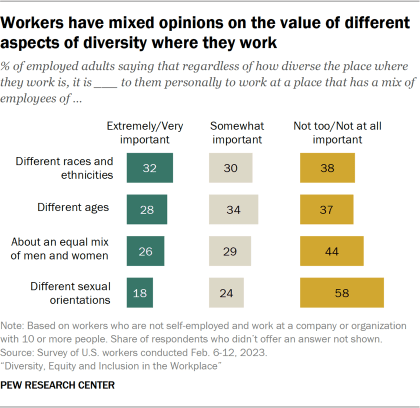
While a majority of workers say focusing on increasing diversity, equity and inclusion at work is a good thing, relatively small shares place great importance on working at a place that is diverse when it comes to gender, race and ethnicity, age, and sexual orientation. About three-in-ten workers say it’s extremely or very important to them to work somewhere with a mix of employees of different races and ethnicities (32%) and ages (28%), while 26% say the same about having about an equal mix of men and women. And 18% say this about having a mix of employees of different sexual orientations at their workplace.
Women are more likely than men to say it’s extremely or very important to them to work at a place that is diverse across all measures asked about in the survey. For example, there are 11 percentage point differences in the shares of women compared with men saying it is extremely or very important to them to work somewhere that has a mix of employees of different races and ethnicities (37% vs. 26%) and about an equal mix of men and women (31% vs. 20%).
Black workers are among the most likely to value racial, ethnic and age diversity in the workplace. Some 53% of Black workers say it is extremely or very important to them to work somewhere with a mix of employees of different races and ethnicities, compared with 39% of Hispanic workers and 25% of White workers who say the same; 43% of Asian workers say this is important to them. (There is no statistically significant difference between the share of Asian workers and the shares of Black and Hispanic workers who hold this view.) And while 42% of Black workers highly value working somewhere with a mix of employees of different ages, smaller shares of Hispanic (33%), Asian (30%) and White (24%) workers say the same.
When it comes to diversity of sexual orientation, 28% of Black workers and 22% of Hispanic workers say it is extremely or very important to them to work somewhere that is diverse in this way; 15% each among White and Asian workers say the same.
Workers under age 50 are more likely than those 50 and older to say racial and ethnic diversity in their workplace is extremely or very important to them (35% vs. 26%). Workers younger than 50 are also more likely to say having about an equal mix of men and women is important to them, with workers ages 18 t0 29 the most likely to say this (34% vs. 26% of workers 30 to 49, and 20% each among those 50 to 64 and 65 and older).
There are also differences by educational attainment, with larger shares of workers with a postgraduate degree than those with less education saying it’s extremely or very important to them that their workplace is diverse across all measures asked about in the survey. For example, 44% of workers with a postgraduate degree say having a mix of employees of different races and ethnicities is extremely or very important to them, compared with 34% of those with a bachelor’s degree only and 27% of those with some college or less.
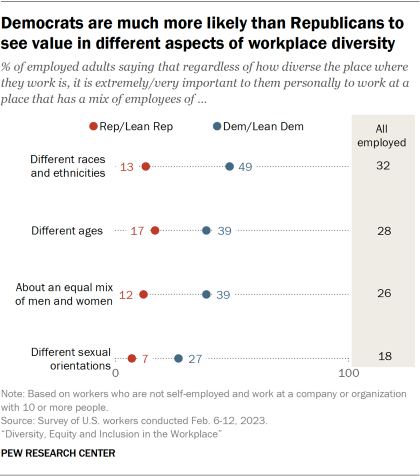
Democratic workers are much more likely than Republican workers to say working somewhere that is diverse when it comes to gender, race and ethnicity, age, and sexual orientation is extremely or very important to them. In fact, about half of Democrats (49%) place great importance on having a mix of employees of different races and ethnicities where they work, compared with 13% of Republicans. And there are differences of at least 20 points between the shares of Democrats and Republicans saying it’s extremely or very important to them to work somewhere that has about an equal mix of men and women (39% of Democrats say this vs. 12% of Republicans) and a mix of employees of different ages (39% vs. 17%) and sexual orientations (27% vs. 7%).
Overall, a majority of workers say their workplace has a mix of employees of different ages (58% say this describes their current workplace extremely or very well). Smaller shares say their workplace has about an equal mix of men and women (38%) and a mix of employees of different races and ethnicities (46%) and sexual orientations (28%). These assessments do not vary much across demographic groups.
Half of workers place great importance on working at a place that is accessible for people with physical disabilities
Half of workers say it is extremely or very important to them to work somewhere that is accessible for people with physical disabilities; 29% say it is somewhat important and 21% say it is not too or not at all important to them.
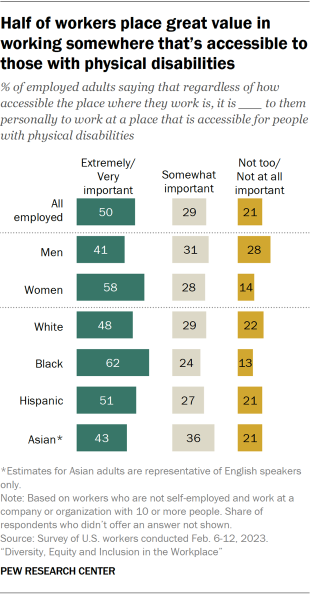
Highly valuing an accessible workplace varies by gender, race and ethnicity, and party, but there is no significant difference in responses between those who do and don’t report having a disability.
About six-in-ten women (58%) say it is extremely or very important to them that their workplace is accessible, compared with 41% of men.
Black workers are more likely than workers of other racial and ethnic groups to place great importance on their workplace being accessible: 62% of Black workers say this is extremely or very important, compared with 51% of Hispanic, 48% of White and 43% of Asian workers.
A majority of Democrats (59%) say it is extremely or very important to them to work somewhere that is accessible for people with physical disabilities; 40% of Republican say the same. Some 27% of Republicans say this is not too or not at all important to them, compared with 15% of Democrats.
There is no statistically significant difference in the shares of workers who have a disability and those who do not saying it is extremely or very important to them to work somewhere that is accessible for people with physical disabilities. But workers who do not have a disability are more likely than those who do to say this is not too or not at all important to them (21% vs. 15%).
Among those who don’t work fully remotely, about three-quarters of workers (76%) say their workplace is at least somewhat accessible for people with physical disabilities, with 51% saying it is extremely or very accessible. Some 17% say their workplace is not too or not at all accessible, and 8% are not sure.
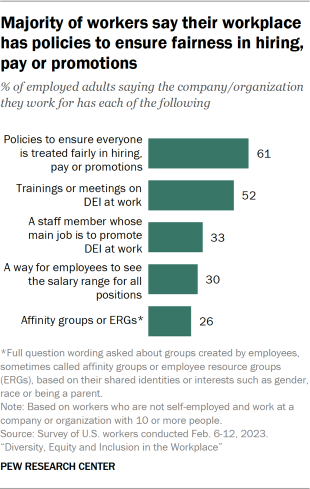
When asked whether the company or organization they work for has a series of measures that are typically associated with diversity, equity and inclusion efforts, a majority of workers say their employer has policies that ensure everyone is treated fairly in hiring, pay or promotions (61%), and 52% say there are trainings or meetings on DEI where they work.
Smaller shares say their workplace has a staff member whose main job is to promote DEI at work (33%), a way for employees to see the salary range for all positions (30%), and groups created by employees sometimes known as affinity groups or employee resource groups (ERGs) based on shared identities such as gender, race or being a parent (26%).
Responses do not vary much by most demographic characteristics. However, workers with at least a bachelor’s degree are consistently more likely than those with less education to say each of these five measures is available where they work.
Workers tend to see positive impact from policies and resources associated with DEI where they work
Among those whose workplace offers each policy or resource, a majority of workers say each measure has had a somewhat or very positive impact where they work. About a third or fewer workers say each resource has had neither a positive nor negative impact, and about one-in-ten or fewer say each of these has had a somewhat or very negative impact.
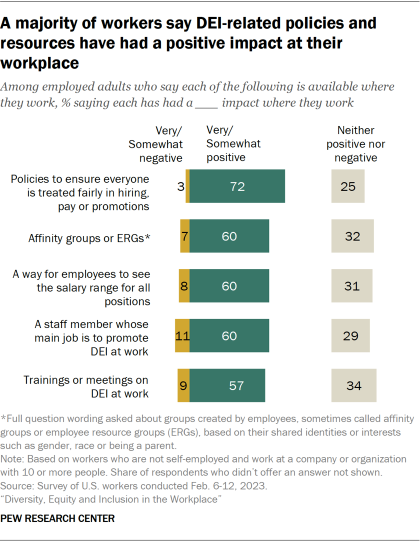
Democrats and Republicans are about equally likely to say their workplace has these measures in place, but Democrats are more likely than Republicans to say the impact of each has been positive by margins ranging from 10 to 32 points (among those who say their workplace has these measures). For example, 66% of Democrats who say their workplace has a way for employees to see the salary range for all positions say this has had a somewhat or very positive impact, compared with 56% of Republicans who say this. And while about three-quarters of Democrats (74%) say having a staff member whose main job is to promote DEI at work has had a positive impact, fewer than half of Republicans (42%) say the same.
Women are more likely than men to say each of these policies and resources has had a very or somewhat positive impact where they work. This is mainly driven by gender differences among Republicans: There are double-digit differences in the shares of Republican women and Republican men who say many of these resources have had a positive impact. For example, 58% of Republican women say having a staff member whose main job is to promote DEI at work has had at least a somewhat positive impact where they work, compared with 31% of Republican men who hold this view. The same share of Republican women (58%) say having affinity groups or ERGs has had a positive impact, compared with 38% of Republican men who say the same.
Among Democrats, majorities of both men and women offer positive assessments of these resources in their workplace, but Democratic women are more likely than Democratic men to say having trainings or meetings on DEI at work have had a positive impact (72% vs. 65%).
While there are differences by race, ethnicity and age on overall attitudes about DEI in the workplace, there are no consistent differences along these dimensions in how workers with access to these policies and resources at their workplace assess their impact.
About half of workers who have participated in DEI trainings in the last year say they’ve been helpful
Out of all workers, about four-in-ten (38%) have participated in a DEI training in the last year. A similar share (40%) did not participate or say their workplace does not offer these trainings, and 21% are not sure if their employer offers these trainings.

Looking only at those whose company or organization has trainings or meetings on DEI, about three-quarters (73%) say they have participated in such trainings in the past year. And assessments of these trainings tend to be positive, with 53% of workers who’ve participated saying they were very or somewhat helpful. About a third (34%) give a more neutral assessment, saying the trainings were neither helpful nor unhelpful, and 13% say they were very or somewhat unhelpful.
While men and women are about equally likely to have participated in trainings on DEI in the past year, women are more likely than men to say the trainings have been at least somewhat helpful (60% vs. 46%).
Republicans and Democrats are also equally likely to say they’ve participated in these trainings in the past year, but Democrats are far more likely than Republicans to say the trainings have been helpful (66% vs. 36%). About one-in-five Republicans say they’ve been unhelpful (19%), compared with 9% of Democrats.
While both Democratic men and women offer similar assessments of the DEI trainings they’ve participated in, there are gender differences among Republican workers. Republican women are more likely than Republican men to say the trainings they’ve participated in have been helpful (47% vs. 28%). Conversely, 22% of Republican men, compared with 14% of Republican women, say the trainings have been unhelpful.
Few workers are members of affinity groups or ERGs at work
While 26% of workers say there are affinity groups or employee resource groups (ERGs) where they work, members of these groups account for a very small share of workers overall. Just 6% of workers say they are members of an affinity group or ERG, with 58% of workers saying these groups are either not available at their workplace or that they aren’t a member. Another 37% say they are not sure if their workplace offers these groups.
When asked about the impact a person’s gender, race or ethnicity has on their ability to succeed at work, workers tend to say these characteristics neither make it easier nor harder to be successful at their workplace.
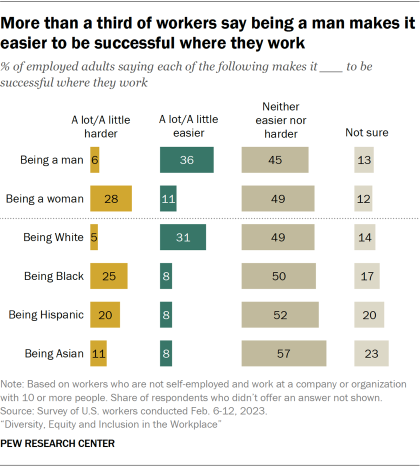
Still, when it comes to gender, workers are more likely to say being a man makes it easier to be successful where they work than to say it makes it harder (36% vs. 6%). In contrast, a larger share says being a woman makes it harder to be successful than say it makes it easier (28% vs. 11%).
Men and women have different views on the impact gender has on a person’s ability to succeed where they work. Some 44% of women say being a man makes it at least a little easier to be successful, including 24% who say it makes it a lot easier. This compares with 29% of men who say being a man makes it at least a little easier to be successful.
Similarly, 34% of women say being a woman makes it harder to be successful where they work, compared with 21% of men.
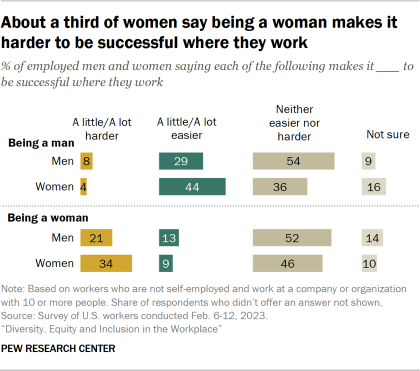
Women under age 50 are especially likely – more so than women ages 50 and older or men in either age group – to say being a man makes it easier to be successful where they work and that being a woman makes it harder. For example, 38% of women ages 18 to 49 say being a woman makes it harder to be successful where they work. This compares with 29% of women 50 and older, 25% of men younger than 50, and an even smaller share of men 50 and older (13%).
When it comes to views about how race or ethnicity affects people’s ability to succeed at work, 51% of Black workers say being Black makes it harder to be successful where they work. This is significantly higher than the shares of Asian (41%), Hispanic (23%) and White (18%) workers who say the same about the impact of being Black.
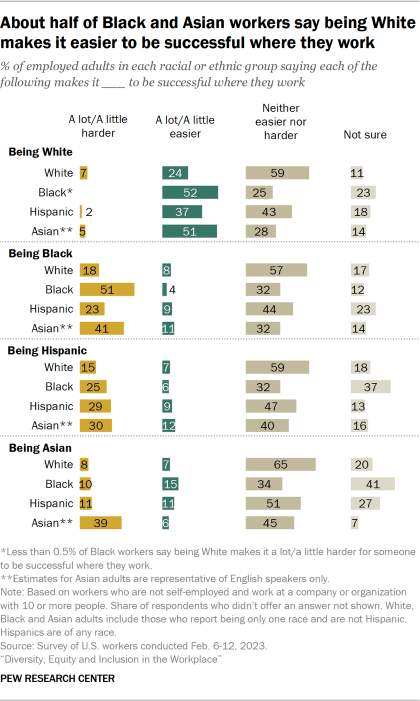
Similarly, about four-in-ten Asian workers (39%) say being Asian makes it harder to be successful in their workplace, a higher share than workers of other racial and ethnic groups who say the same about being Asian.
Hispanic, Black and Asian workers are about equally likely to say being Hispanic makes it harder to be successful where they work. A smaller share of White workers say the same about being Hispanic.
When asked about the impact of being White in their workplace, workers across racial and ethnic groups are more likely to say it makes it easier than to say it makes it harder to be successful. This is especially the case among Black and Asian workers. About half of Black (52%) and Asian (51%) workers say being White makes it easier to be successful where they work, compared with 37% of Hispanic and 24% of White workers who say the same about being White.
Previously released findings from this survey found that Black workers are more likely than White, Hispanic and Asian workers to report that they have experienced discrimination or have been treated unfairly by an employer in hiring, pay or promotions because of their race or ethnicity at some point in their careers (though not necessarily where they currently work). Women are also more likely than men to say they’ve experienced such discrimination because of their gender.
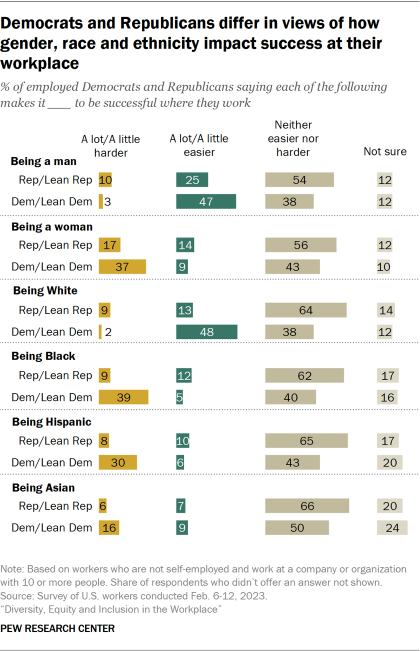
There are large partisan gaps in views of whether gender, race or ethnicity make it easier or harder to be successful at work. Some 47% of Democratic workers say being a man makes it at least somewhat easier to be successful at their workplace, compared with 25% of Republican workers. Democrats are also more likely than Republicans to say being a woman makes it harder to succeed (37% vs. 17%).
Democratic and Republican women are more likely than their male counterparts to say being a woman makes it harder – and being a man makes it easier – to be successful where they work. The differences between Republican women and Republican men are particularly striking. About a quarter of Republican women (26%) say being a woman makes it harder to be successful, compared with 10% of Republican men. And while 36% of Republican women say being a man makes it easier to be successful where they work, just 16% of Republican men say the same.
Democratic workers are more than three times as likely as Republican workers to say being White makes it easier to succeed where they work (48% vs. 13%), and they are also more likely than Republicans to say being Black, Hispanic or Asian makes it harder. About four-in-ten Democrats (39%) say being Black makes it harder for someone to succeed at their workplace, compared with just 9% of Republicans. Similarly, 30% of Democrats say being Hispanic makes it harder to succeed, compared with 8% of Republicans. And while smaller shares in both parties say being Asian makes it harder to succeed, Democrats are more likely than Republicans to say this (16% vs. 6%). These partisan differences remain when looking only at Democrats and Republicans who are White.
- For details, see the Methodology section of the report. The analysis in this report is based on U.S. workers who are employed full time or part time, who are not self-employed, and who have only one job or have multiple jobs but consider one their primary job (99% of workers who are not self-employed have one job or a primary job). Additionally, the analysis is restricted to workers at companies or organizations with at least 10 employees as certain federal requirements such as non-discrimination mandates apply to larger workplaces. ↩
- Non-White adults include Black, Hispanic, Asian and other races besides White, as well as people who identify as more than one race. The sample sizes among Black, Hispanic and Asian workers who have affinity groups or ERGs at work are too small to analyze separately. ↩
Social Trends Monthly Newsletter
Sign up to to receive a monthly digest of the Center's latest research on the attitudes and behaviors of Americans in key realms of daily life
Report Materials
Table of contents, about a third of u.s. workers who can work from home now do so all the time, how americans view their jobs, the enduring grip of the gender pay gap, for today’s young workers in the u.s., job tenure is similar to that of young workers in the past, majority of u.s. workers changing jobs are seeing real wage gains, most popular.
About Pew Research Center Pew Research Center is a nonpartisan fact tank that informs the public about the issues, attitudes and trends shaping the world. It conducts public opinion polling, demographic research, media content analysis and other empirical social science research. Pew Research Center does not take policy positions. It is a subsidiary of The Pew Charitable Trusts .
A Leadership Guide to Diversity & Inclusion in the Workplace

Despite mounting evidence that demonstrates the substantial benefits of diversity, equity, and inclusion (DEI) initiatives in organizational success (Krause, 2022), many organizations are slow to make meaningful headway on this issue (Dixon-Fyle et al., 2020).
This leadership guide is designed to help leaders identify barriers and challenges to implementing DEI initiatives and to equip them with actionable insights to leverage the advantages of diversity and inclusion in the workplace.
By embracing DEI, companies position themselves strategically for enhanced innovation, improved financial performance, and increased employee engagement. They also fulfill their moral and ethical responsibilities to their employees, local communities, and society more broadly.
Before you continue, we thought you might like to download our three Positive Leadership Exercises for free . These detailed, science-based exercises will help you or others adopt positive leadership practices and help organizations thrive.
This Article Contains
What are the benefits of a diverse workplace, 5 strategies for leaders to foster diversity and inclusion, how to overcome challenges and address resistance, 5 key elements of successful diversity and inclusion initiatives, recommended dei books, useful resources from positivepsychology.com, a take-home message.
Diversity, equity, and inclusion comprise a set of values and practices within a wider business strategy that aim to drive fairness and equity within the working environment.
Investing in DEI can be fruitful for business-related outcomes and for employee wellbeing. Krause (2022) suggests that DEI is a vital foundation from which workplace wellbeing and optimal performance can emerge.
While many organizations will inquire about the return on investment of DEI efforts, there is much more to be gained than profit maximization. That being said, evidence suggests that diverse and inclusive leadership teams are 21% more likely to outperform their peers in terms of profitability (Dixon-Fyle et al., 2020) and have 19% higher revenue due to increased innovation (Lorenzo et al., 2018).
The following list details other equally important advantages of fostering diversity and inclusion in the workplace:
Increased innovation, creativity & problem solving
Reynolds and Lewis (2017) found that diverse teams solve problems faster than homogeneous teams by bringing more innovative ideas and creative solutions to challenges.
Enhanced decision-making
Diverse teams can positively influence decision-making. The inclusion of diverse voices helps to avoid groupthink, encourages critical analysis, and promotes a culture of continuous learning and improvement (Robinson & Dechant, 1997).
Improved employee performance, engagement, and reduced turnover
A diverse and inclusive environment fosters a sense of belonging and value, which can positively impact job satisfaction , retention, and engagement (Albrecht & Andreetta, 2011; Brimhall et al., 2017; Gallup, 2022).
Better understanding of global markets
A diverse workforce mirrors a diverse customer base, providing insights into different markets and cultural nuances. This understanding can be valuable for organizations looking to expand globally or cater to diverse customer needs (Robinson & Dechant, 1997).
Enhanced reputation and brand image
Companies that prioritize diversity are often seen as socially responsible and progressive. A positive reputation for diversity and inclusion in the workplace can attract customers, clients, and investors who value these principles (Rao & Tilt, 2016).
It is evident then, that building a diverse workforce that reflects the world we live in can have critical implications for individuals and businesses.
Implementing workplace DEI strategies more broadly can also have spillover benefits for society, such as more acceptance and pursuit of equal societies and greater societal and global wellbeing (Krause, 2022).

As such, it is important that organizations and leaders accept their responsibility to foster DEI in their workplace and are fully committed to seeing their strategies through, even in the face of setbacks and challenges.
Furthermore, DEI must be viewed as a long-term strategy rather than a set of short-term initiatives. A systemic approach is required to implement positive change (Zheng, 2022).
For these strategies to have a positive impact, they must be implemented comprehensively and consistently, such that diversity, equity, and inclusion are woven into the very fabric of the organization. This requires ongoing commitment and proactivity from leaders and managers.
Here are five key strategies leaders should focus on to promote diversity and inclusion in the workplace:
1. Lead by example
Leaders must demonstrate a commitment to diversity, equity, and inclusion through their actions and behaviors. Inclusive leadership training (Kuknor & Bhattacharya, 2020) can help leaders promote openness and transparency, build awareness of personal biases, enhance cultural competency, and empower others.
For more information on inclusive leadership, you may enjoy this TED talk by June Sarpong.
2. Create inclusive policies and practices
Organizations should establish comprehensive diversity, equity, and inclusion policies, paired with practices and processes that ensure fairness and equal opportunities for all.
These policies should be regularly reviewed and updated to address evolving needs and challenges.
3. Provide diversity and inclusion training
Providing regular training sessions can help raise awareness about unconscious bias, microaggressions, and the importance of DEI. It is the responsibility of organizations and leaders to equip their employees with the skills required to challenge and overcome biases in the workplace.
4. Promote diverse hiring and advancement opportunities
It is vital that organizations audit their hiring processes and make them more inclusive.
This means expanding hiring pools and addressing bias in both job criteria and interview processes. Mentoring and sponsorship programs can be a great way to further support underrepresented talent.
5. Foster inclusive culture and communication
Leaders must look to build a psychologically safe workplace culture that values open communication and collaboration.
This can be paired with establishing employee resource groups or affinity networks and celebrating cultural events to bolster a sense of understanding, community, and support among employees.
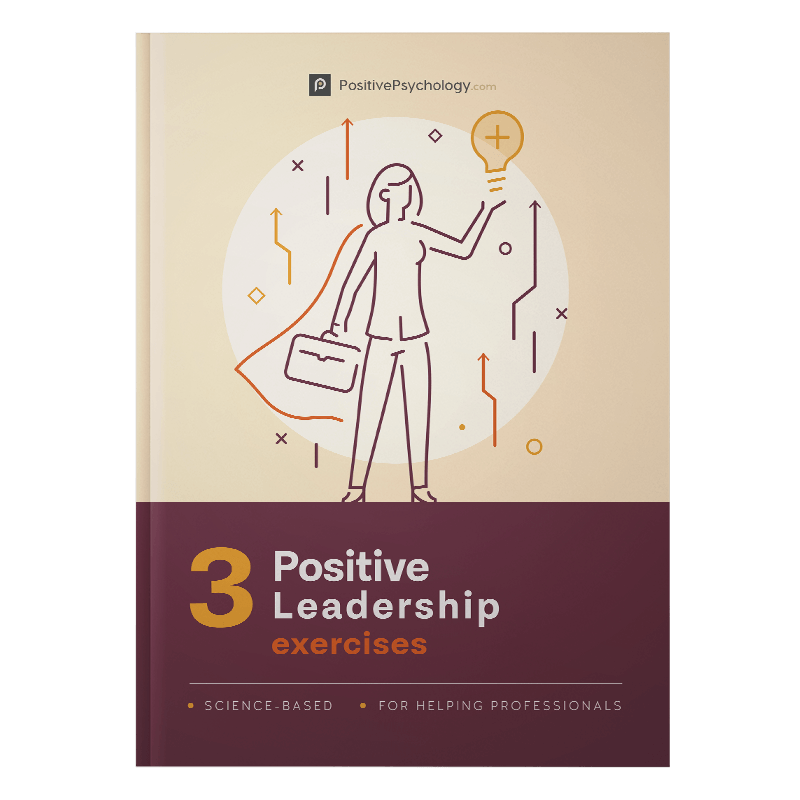
Download 3 Free Positive Leadership Exercises (PDF)
These detailed, science-based exercises will help you or others to adopt positive leadership practices to help individuals, teams and organizations to thrive.
Download 3 Free Positive Leadership Exercises Pack (PDF)
By filling out your name and email address below.
- Email Address *
- Your Expertise * Your expertise Therapy Coaching Education Counseling Business Healthcare Other
- Comments This field is for validation purposes and should be left unchanged.
Resistance to DEI efforts in organizations can stem from a variety of factors, often rooted in organizational culture, individual beliefs, and perceived threats.
Despite some recent backlash against DEI (where Elon Musk spoke agains DEI; Hart 2023), it is more crucial than ever that organizations and leaders push for parity. But doing so requires hard work, oftentimes internally.
So before leaders forge ahead with their DEI strategy, it is important to identify possible sources of or reasons for opposition.
Lack of awareness and unconscious bias
Some individuals lack awareness of the benefits of DEI or the challenges faced by underrepresented groups. This lack of awareness, coupled with unconscious bias, can negatively influence decision-making and contribute significantly to resistance.
Recommendation : Provide education via training, workshops, guest speakers, and access to leadership books and video resources. Caveat: beware unconscious bias training as a cure-all. Some research suggests it does little to eradicate bias (Noon, 2018).
Fear of change
Change can always be a scary proposition, even when it is a positive change. Some employees may be concerned that DEI efforts will disrupt established norms, leading to discomfort or uncertainty about their roles within the organization.
Recommendation: A communication plan where the goals and intent of DEI programs are clearly stated can help allay fears of uncertainty. Appreciative inquiry can also be a helpful tool to galvanize hope around organizational change.
Perceived threat to power dynamics
Individuals in positions of privilege may feel that DEI efforts challenge their status or perceived advantages. Resistance can be rooted in a fear of losing power, influence, or opportunities as the organization becomes more diverse.
Recommendation: Fostering empathy through compassion training can be an effective tool to address resistance stemming from relinquishing power and control. Building compassion toward others creates understanding and reduces ego-defensiveness (Neff, 2011).
Addressing resistance to DEI efforts requires a multifaceted approach that involves a lot of deep work. However, addressing these underlying issues before starting out on a DEI journey may offer a greater chance of success.

1. Significant resource allocation
If organizations really want to make progress with DEI, they have to commit resources to the program. This should include monetary, material, time, management, and expertise/intellectual resources.
2. DEI management
Organizations must consider how to carefully manage their DEI strategy. One of the most effective approaches is to create dedicated roles and teams for DEI and hire individuals with expertise, such as organizational psychologists, sociologists, behavioral scientists, and leaders with DEI certifications (Plaut, 2010).
3. Evidenced-based targets
Data is vital for creating change because it can reveal insights into an organization’s DEI gaps and allow for real-time monitoring of progress toward goals.
It is also important that organizations create targets that are grounded in evidence, using academic research and practical positive feedback .
4. Core business leadership accountability
For cultural and organizational change to occur, there must be support and buy-in from the leadership and executive levels (Sashkin, 2012). Moreover, there must be accountability when DEI issues emerge. For example, how do leaders manage instances of microaggressions in the workplace?
5. Include diverse voices in the process
When approaching DEI, diverse voices must be central to shaping organizational values, policies, practices, and strategies.
However, this does not mean pushing the burden of fixing structural inequalities onto individuals from historically marginalized backgrounds. Rather, employees should work collaboratively to co-create inclusive workplaces that make sense and work for all.
If organizations are able to commit to these best practices, DEI programs have a greater chance of creating positive change.
Given the popularity of DEI as a movement, concept, and moral position, books on how to navigate diversity and inclusion in the workplace and support equality in society are increasing.
The following list outlines five excellent reads that provide a breadth and depth of knowledge on key topics such as bias, race, trans rights, and how to build successful DEI programs.
These books offer valuable perspectives on different aspects of DEI, providing practical insights, research-based knowledge, and tools for creating more diversity and inclusion in the workplace.
1. Blindspot: Hidden Biases of Good People – Mahzarin R. Banaji and Anthony G. Greenwald

This book is an essential read for anyone seeking to understand and mitigate the impact of unconscious bias in the workplace and beyond.
Find the book on Amazon .
2. How to Be an Antiracist – Ibram X. Kendi

Kendi challenges readers to move beyond non-racism and actively work against racist structures. Drawing on personal experiences and historical analysis, Kendi provides a guide for individuals and organizations committed to fostering antiracist practices.
This book is instrumental in shaping discussions around diversity, equity, and inclusion, encouraging readers to critically examine their beliefs and actions.
3. The Transgender Issue: An Argument for Justice – Shon Faye
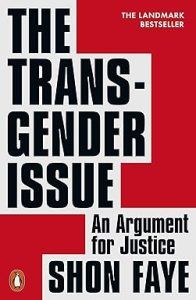
Through a combination of personal narrative, social commentary, and critical analysis, Faye delves into the complexities of transgender identity, shedding light on the social, cultural, and political factors that shape the lives of transgender people.
The Transgender Issue serves as an essential resource for anyone seeking to better understand and support transgender individuals in today’s society.
4. DEI Deconstructed: Your No-Nonsense Guide to Doing the Work and Doing It Right – Lily Zheng

Critically, Zheng emphasizes the importance of intersectionality and the need to address systemic inequalities to create meaningful change.
As such, DEI Deconstructed serves as an invaluable resource for leaders, HR professionals, and individuals committed to advancing DEI in their organizations and communities.
Find the book on Amazon.
5. I’m Not Yelling: A Black Women’s Guide to Navigating the Workplace – Elizabeth Leiba
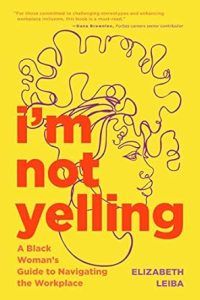
Through personal anecdotes, interviews, and research, Leiba sheds light on the unique challenges and systemic barriers faced by Black women in the workplace.
Leiba also offers practical strategies and advice for Black women to advocate for themselves, navigate office politics, and thrive in their careers. As such, this book is an influential resource for those seeking support and guidance in their professional journeys.
For a bumper crop of useful exercises and worksheets to help leaders who are keen to build an agenda for diversity and inclusion in the workplace, look no further than PositivePsychology.com.
One good place to start is by exploring the building empathy worksheet. This worksheet is useful for groups and enables individuals to engage in perspective taking. Being able to listen and place ourselves in the shoes of others is key to fostering social empathy (Segal, 2011).
Closely linked to empathy is compassion. Leaders can benefit hugely from practicing compassion, both toward themselves and others. This compassion worksheet is focused on maintaining positive relationships with others by introducing four new ways to show appreciation and care to others.
Self-esteem is another critical psychological resource that all leaders could benefit from cultivating. This self-esteem journal helps individuals foster positive beliefs about themselves and their capabilities by reflecting on meaningful daily events. By leaning into self-acceptance and vulnerability, leaders will be in a much better position to build safe and inclusive environments for others.
Given the fact that resistance to DEI efforts can stem from a lack of awareness of one’s own biases, the Johari window exercise is a useful way to build self-awareness and shed light on beliefs and assumptions that need addressing.
If you’re looking for more science-based ways to help others develop positive leadership skills, check out this collection of 17 validated positive leadership exercises . Use them to equip leaders with the skills needed to cultivate a culture of positivity and resilience.
Looking to the future, Van Durme et al. (2023) argue that DEI must become a top area of focus for organizations. Dismantling inequality in the workplace is not an easy task.
But taking vital steps toward creating parity is possible. By incorporating the principles and practices above into DEI efforts, leaders can play a vital role in shaping a workplace that goes beyond acceptance to active celebration of diversity and inclusion.
This commitment to DEI can transcend the organization and contribute to a broader societal shift toward understanding, tolerance, and unity. In this way, DEI can be a formidable catalyst for positive change.
We hope you enjoyed reading this article. Don’t forget to download our three Positive Leadership Exercises for free .
- Albrecht, S. L., & Andreetta, M. (2011). The influence of empowering leadership, empowerment and engagement on affective commitment and turnover intentions in community health service workers: Test of a model. Leadership in Health Services , 24 (3), 228–237.
- Brimhall, K. C., Mor-Barak, M. E., Hulbert, M., McArdle, J. J., Palinkas, L., & Henwood, B. (2017). Increasing workplace inclusion: The promise of leader-member exchange. Human Service Organizations: Management, Leadership & Governance , 41 (3), 222–239.
- Dixon-Fyle, S., Hunt, V., Prince, S., & Dolan, K. (2020, May 19). Diversity wins: How inclusion matters. McKinsey & Company. https://www.mckinsey.com/featured-insights/diversity-and-inclusion/diversity-wins-how-inclusion-matters
- Gallup. (2022, May 11). Unleashing the human element at work: Transforming workplaces through recognition . https://www.workhuman.com/resources/reports-guides/unleashing-the-human-element-at-work-transforming-workplaces-through-recognition/
- Hart, R. (2023, Dec 15). Elon Musk Says DEI ‘Must Die’ and Criticizes Diversity Schemes as ‘Discrimination’. Forbes. https://www.forbes.com/sites/roberthart/2023/12/15/elon-musk-says-dei-must-die-and-criticizes-diversity-schemes-as-discrimination/
- Krause, W. (2022). Diversity, equity and inclusion as fertile foundation for workplace well-being, optimal performance, and planetary health. In J. Marques & S. Dhiman (Eds.), Leading with diversity, equity and inclusion: Approaches, practices and cases for integral leadership strategy (pp. 263–279). Springer.
- Kuknor, S., & Bhattacharya, S. (2020). Inclusive leadership: New age leadership to foster organizational inclusion. European Journal of Training and Development , 46 (9), 771–797.
- Lorenzo, R., Voigt, N., Tsusaka, M., Krentz, M., & Abouzahr, K. (2018, January 22). How diverse leadership teams boost innovation . BCG Global. Retrieved January 23, 2024, from https://www.bcg.com/publications/2018/how-diverse-leadership-teams-boost-innovation
- Neff, K. D. (2011). Self‐compassion, self‐esteem, and well‐being. Social and Personality Psychology Compass , 5 (1), 1–12.
- Noon, M. (2018). Pointless diversity training: Unconscious bias, new racism and agency. Work, Employment and Society , 32 (1), 198–209.
- Plaut, V. C. (2010). Diversity science: why and how difference makes a difference . Psychological Inquiry , 21 , 77–99.
- Rao, K., & Tilt, C. (2016). Board composition and corporate social responsibility: The role of diversity, gender, strategy and decision making. Journal of Business Ethics , 138 , 327–347.
- Reynolds, A., & Lewis, D. (2017, March 30) Teams solve problems faster when they’re more cognitively diverse . Harvard Business Review. https://hbr.org/2017/03/teams-solve-problems-faster-when-theyre-more-cognitively-diverse
- Robinson, G., & Dechant, K. (1997). Building a business case for diversity. Academy of Management Executive , 11 (3), 21–31.
- Sashkin, M. (2012). Leadership. In W. E. Rosenbach, R. Taylor, & M. A. Youndt (Eds.), Contemporary issues in leadership . Westview Press.
- Segal, E. A. (2011). Social empathy: A model built on empathy, contextual understanding, and social responsibility that promotes social justice. Journal of Social Service Research , 37 (3), 266–277.
- Van Durme, Y., Scoble-Williams, N., Eaton, K., Kirby, L., Griffiths, M., Poynton, S., Mallon, D., & Forsythe, J. (2023, February 2). Deloitte 2023 global human capital trends . Deloitte Insights. Retrieved January 23, 2024, from https://www2.deloitte.com/us/en/insights/focus/human-capital-trends/2023/future-of-workforce-management.html
- Zheng, L. (2022). DEI deconstructed: Your no-nonsense guide to doing the work and doing it right . Berrett-Koehler.
Share this article:
Article feedback
Let us know your thoughts cancel reply.
Your email address will not be published.
Save my name, email, and website in this browser for the next time I comment.
Related articles

Company Culture: How to Create a Flourishing Workplace
Company culture has become a buzzword, particularly in the post-COVID era, with more organizations recognizing the critical importance of a healthy workplace. During the Great [...]

Integrity in the Workplace (What It Is & Why It’s Important)
Integrity in the workplace matters. In fact, integrity is often viewed as one of the most important and highly sought-after characteristics of both employees and [...]

Neurodiversity in the Workplace: A Strengths-Based Approach
Promoting diversity, equity, and inclusion (DEI) in the workplace is a priority for ethical employers who want to optimize productivity and leverage the full potential [...]
Read other articles by their category
- Body & Brain (48)
- Coaching & Application (57)
- Compassion (26)
- Counseling (51)
- Emotional Intelligence (24)
- Gratitude (18)
- Grief & Bereavement (21)
- Happiness & SWB (40)
- Meaning & Values (26)
- Meditation (20)
- Mindfulness (45)
- Motivation & Goals (45)
- Optimism & Mindset (34)
- Positive CBT (27)
- Positive Communication (20)
- Positive Education (47)
- Positive Emotions (32)
- Positive Leadership (17)
- Positive Parenting (2)
- Positive Psychology (33)
- Positive Workplace (37)
- Productivity (16)
- Relationships (47)
- Resilience & Coping (35)
- Self Awareness (21)
- Self Esteem (37)
- Strengths & Virtues (30)
- Stress & Burnout Prevention (34)
- Theory & Books (46)
- Therapy Exercises (37)
- Types of Therapy (64)
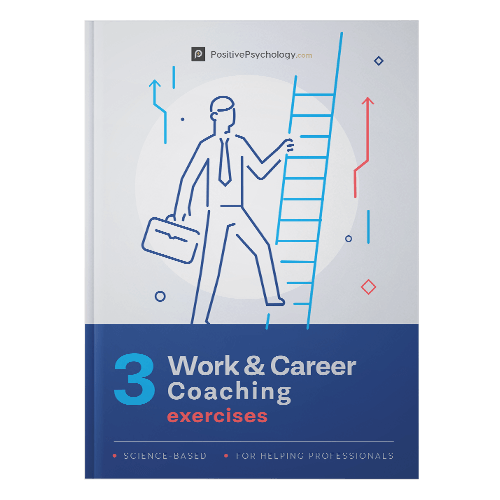
Download 3 Free Work & Career Tools Pack (PDF)
- Name This field is for validation purposes and should be left unchanged.
Download 3 Work & Career Exercises Pack (PDF)

- Case Studies
- Flexible Products

- Expert Insights
- Research Studies

- Creativity and Culture
- Management and Leadership
- Business Solutions

- Member Spotlight
- Employee Spotlight
What is diversity and inclusion in the workplace?
Foster an inclusive work environment and you empower people to be their authentic selves.

The mission to ensure that every employee feels safe and supported in the workplace is a never-ending one, but in recent years many strides have been made in making diversity and inclusion a core part of doing business.
Large global corporations are often the most visible in this respect, as they tend to lead the way in flagship diversity and inclusion policies. These policies not only allow them to foster a healthy and happy workforce, but to conduct business internationally and attract the most qualified applicants from all backgrounds.
Small- to medium-sized companies have an even more important role to play when it comes to fairness and equity in the office. To begin, it’s the right thing to do; but implementing a diversity and inclusion policy can also help a company become more adaptable, more creative, and more competitive.
What is meant by diversity and inclusion in the workplace?
The term “ diversity and inclusion ” describes both the makeup of a workforce, as well as the policies and processes used to remove barriers and ensure that every employee has equal access to opportunities and support at a company.
The ultimate goal is to ensure fairness and equity for all employees, regardless of characteristics like gender, ethnicity, nationality, sexual orientation, and age; however, diversity and inclusion is an ongoing process rather than a destination. With a well-designed diversity and inclusion policy, a company can not only make better and fairer decisions at the recruitment stage but also foster a healthier workplace where employees feel heard and supported.
What’s the difference between diversity and inclusion?
While the terms are usually bundled together as one, there’s a big difference between diversity and inclusion. Diversity describes the ways in which we are different. A diverse workplace will be made up of people from a wide variety of backgrounds at every level of the business, from entry-level roles all the way up to management.

But just because a workplace is diverse doesn’t necessarily mean it’s also inclusive. Inclusion describes the power employees have to make decisions and hold influence. A company focused on being inclusive will make sure that every employee can participate fully in the organization; in other words, workers should feel that their voices are being heard, and that they have the same access as their colleagues to opportunities for success.
Diversity and inclusion in the workplace
Diversity and inclusion should naturally reflect a company’s greater mission to strive for fairness and equality in every sphere of business . This is more than just in the office—it’s in how the company communicates with customers, how it chooses the clients it works with, and how it creates products and services .
But beyond simply being the greater good, there are direct and immediate benefits for any employer that pursues a diverse and inclusive work environment. In this article, we’re going to take a look at some of the advantages offered by recruiting diversely and striving toward inclusivity.
Benefits of having a diverse and inclusive environment in the workplace
Diverse and fresh points of view.
A diverse and inclusive workplace comprised of people from many different backgrounds will tend to have a wider variety of perspectives and ideas to draw from. Problems can be framed in different ways that lead to creative solutions across every department of the business.
A better understanding of customer needs
The company gains a greater understanding of the needs of its customers when its own workplace reflects the very people who use its products and services every day. By hiring thoughtfully from a broader pool of potential employees and retaining a diverse workforce, a company can reach a much wider customer base.
Better decision-making
With a greater variety of perspectives as well as a work environment that encourages communication, companies will experience improved decision-making. This benefits everything from day-to-day actions to long-term planning for the future of the business.
Access to more qualified potential employees
A well-structured diversity and inclusion policy ensures that the recruitment process isn’t simply open to all potential employees, but actively seeks out and encourages applicants who might be less visible in their industry or who are hesitant to apply. A wider applicant pool means more qualified hires. When a company has a reputation for hiring diversely and fostering an inclusive work environment, it will more easily attract and retain the best and most qualified candidates in the future.
How can diversity and inclusion be promoted in the workplace?
Choose leaders who promote this idea.
Take into account a candidate’s commitment to diversity and inclusion when hiring, but also when promoting team leaders from within. By elevating employees who champion these values, a company can improve equity among staff and create a self-sustaining push toward fairness in the business.

Use appropriate internal and external communication
Diversity training courses can improve communication at all levels—between teams, with customers, and with people outside the company as well. Small changes to how we write and speak to one another, such as avoiding gendered language in emails, can have a big impact on overall inclusivity.
Give support to those who need it
Equity is about more than simply ensuring equal access and treatment for all—it’s also about raising up and supporting those employees who have particular needs. Every company is required by law to make reasonable adjustments so that no worker is disadvantaged in the workplace, but this is a baseline rather than a target. Discuss individual workers’ needs with them, and make changes to ensure they’re met or even exceeded.
Have a clear recruiting plan for it
Recruitment is the biggest driver of diversity in the workplace. For a recruitment plan to reach the most varied pool of potential applicants, it should consider every aspect of the process: from how and where your vacancies are advertised to how accessible the application and interview process is to interested parties.
Equal access to opportunities
When evaluating and considering employees for promotions and other opportunities, be aware of unconscious bias at every stage. Even well-intentioned managers are prone to discriminatory behavior, whether they realize it or not. Bias training helps to alleviate this, as do systems like blind recruitment, in which identifying characteristics such as gender and applicant names are removed from résumés.
Educate about diversity
Education is a key part of fostering a sense of inclusion and fairness in business. A company should publicize its diversity goals, update employees on the progress being made, and strive to help everybody understand why diversity in the workplace is important. This might mean taking steps such as opening a dialogue about things like gender pay imbalance, or bridging a skill gap by offering training courses.
Examples of companies that promote diversity and inclusion
Mastercard .
The global financial services firm is regularly recognized for its diversity and inclusion initiatives. As well as sponsoring STEM mentorship programs such as Girls4Tech, the company offers a range of employee benefits such as coverage for gender-affirming surgery, fertility treatment, and adoption assistance.
The cosmetics company consistently scores highly in corporate equality benchmarks, thanks to a diversity and inclusion strategy designed to span the 130 countries in which L’Oréal operates. Women make up 69 percent of the workforce, and the company offers multicultural mentorship courses and on-the-ground job training for young people in some of the poorest nations in the world.
This biotech research organization in San Francisco works to make genetic information more affordable to those who need it. In 2020, it launched a suite of diversity and inclusion initiatives centered on a set of seven employee resource groups, which include Women in Tech, Pride, and Black Genetics. These ERGs host regular community table talks where employees can openly and informally discuss issues affecting them.
Related articles

Fair treatment to all: The key to diversity and inclusion at work
Diversity and inclusion can’t be easily summarized, mainly because it’s a catchall term consisting of unrelated challenges. For example: A goal of hiring more women into management positions will require a different approach than ensuring that LGBTQ+ employees feel welcome in the workplace, or that workers of different ethnicities have a voice.

But the basis for these ideas is a commitment to fair treatment for all and consideration of the unique perspectives of every employee. That mindset will lead to the creation of an equitable workplace that accepts, appreciates, and values differences. This is the key point to keep in mind when designing a diversity and inclusion initiative for your own company.
Steve Hogarty is a writer and journalist based in London. He is the travel editor of City AM newspaper and the deputy editor of City AM Magazine , where his work focuses on technology, travel, and entertainment.
Rethinking your workspace?

From watercooler chats to crisis communication, the way companies share information can make or break them

Millennials now make up most of the workforce, and it’s changing how we communicate at the office
Home — Essay Samples — Social Issues — Diversity — Promoting the Diversity and Inclusion within the Workplace
Promoting Diversity and Inclusion Within The Workplace
- Categories: Diversity Workplace
About this sample

Words: 904 |
Published: Nov 15, 2018
Words: 904 | Pages: 2 | 5 min read
- being aware of our own beliefs and behaviors and how this may influence the way we treat others
- listening with an open mind to understand different points of view
- being proactive in offering support to others
- encourage team members and help each other
- regularly reinforcing behaviors (e.g. as a part of team meetings)
- providing feedback on employee behaviors in relation to inclusivity as a part of performance reviews
- ensuring that teams are not overly influenced by a small number of individuals by seeking out perspectives of all team members and encouraging full participation
- treating women equally at par and not trying to belittle them (e.g. not automatically making an assumption that a woman in the team should be taking the meeting minutes)
- creating opportunities for team members to get to know each other beyond their job roles.
- Promptly addressing misunderstandings, such as providing feedback when the impact of their actions inadvertently differ from their intent
- Taking prompt action when disrespectful incidents occur, such as inappropriate jokes or language, or when people are excluded
- Ensuring consequences are in place for repeated inappropriate behavior.
- Maintaining a culture that embraces gender equality
- Undertaking a culture survey
- Raising awareness of the detrimental effects of gender stereotypes and areas of unconscious bias
- Including the expectation of equitable and inclusive behaviors as a part of the induction for all new employees and a compulsory part of ongoing employee performance review discussions.
- Commit to boosting our own cultural competency.
- Cross cultural communication.
- Having seminars to educate about other cultural traditions.
- Actively seek out new perspectives and ideas for any problems globally across the team (People from different cultures and background may take a different approach to issues).
- Creating a workplace where different perspectives are valued and embraced can go a long way and take the hospital to even greater heights.
- Treat others how they want to be treated and not to “treat others how you want to be treated”
- Always be considerate and sensitive to the boundaries and expectations of others. For example, understanding how different cultures perceive a handshake, maintaining eye contact or the boundaries of personal space can help to avert misunderstandings.
- Very important when in doubt, ask if you accidentally caused offense, apologize. This will be appreciated.
- Being respectful of personal and cultural boundaries, and encouraging your colleagues to do the same through your example, will make the workplace more welcoming and productive for everyone.
- Observe diverse traditions, celebrations, and holidays from other culture.
Works Cited
- Bell, M. P. (2012). Diversity in organizations. Cengage Learning.
- Cox, T. (1994). Cultural diversity in organizations: Theory, research and practice. Berrett-Koehler Publishers.
- Deane, B. R., & Stokols, D. (2018). Community interventions for health and wellbeing: Theory, practice, and outcomes. Routledge.
- Harvard Business Review. (2013). Diversity & Inclusion. Harvard Business School Publishing.
- Herring, C. (2009). Does diversity pay?: Race, gender, and the business case for diversity. American Sociological Review, 74(2), 208-224.
- Madsen, S. R., & Shafritz, J. M. (2010). Essentials of business ethics. Penguin.
- Pless, N. M., & Maak, T. (2004). Building an inclusive diversity culture: Principles, processes and practice. Journal of Business Ethics, 54(2), 129-147.
- Roberson, Q. M., & Park, H. J. (2007). Examining the link between diversity and firm performance: The effects of diversity reputation and leader racial diversity. Group & Organization Management, 32(5), 548-568.
- Robinson, V. M., & Hayday, S. (2015). The positive effects of diversity management on innovation: An empirical study in the UK hospitality industry. International Journal of Contemporary Hospitality Management, 27(2), 168-182.
- Thomas, R. R., & Ely, R. J. (1996). Making differences matter: A new paradigm for managing diversity. Harvard Business Review, 74(5), 79-90.


Cite this Essay
Let us write you an essay from scratch
- 450+ experts on 30 subjects ready to help
- Custom essay delivered in as few as 3 hours
Get high-quality help

Dr. Heisenberg
Verified writer
- Expert in: Social Issues Life

+ 120 experts online
By clicking “Check Writers’ Offers”, you agree to our terms of service and privacy policy . We’ll occasionally send you promo and account related email
No need to pay just yet!
Related Essays
3 pages / 1208 words
1 pages / 571 words
6 pages / 2507 words
3 pages / 1552 words
Remember! This is just a sample.
You can get your custom paper by one of our expert writers.
121 writers online

Still can’t find what you need?
Browse our vast selection of original essay samples, each expertly formatted and styled
Related Essays on Diversity
Cletus, H. E., Mahmood, N. A., Umar, A., & Ibrahim, A. D. (2018). Prospects and challenges of workplace diversity in modern day organizations: A critical review. HOLISTICA–Journal of Business and Public Administration, 9(2), [...]
In the modern healthcare landscape, diversity in nursing has emerged as a crucial and highly relevant topic. The nursing profession is a cornerstone of healthcare systems worldwide, and its effectiveness hinges on the diverse [...]
Diversity is an essential aspect of human society and encompasses a range of primary and secondary aspects that have shaped the world throughout history. This essay will explore the importance of historical perspectives in [...]
Within the realm of contemporary educational discourse, the concept of multicultural education stands as an indelible cornerstone, profoundly shaping the educational landscape. This essay undertakes an extensive exploration of [...]
In a rapidly growing globalised economy, workforces that are culturally diverse can help organisations expand their business in global markets. Being able to communicate effectively in different parts of the world is a crucial [...]
Nicole Byer is a trailblazing comedian and actress who has made a significant impact in the entertainment industry. With her infectious humor and unapologetic authenticity, she has garnered a loyal following and gained [...]
Related Topics
By clicking “Send”, you agree to our Terms of service and Privacy statement . We will occasionally send you account related emails.
Where do you want us to send this sample?
By clicking “Continue”, you agree to our terms of service and privacy policy.
Be careful. This essay is not unique
This essay was donated by a student and is likely to have been used and submitted before
Download this Sample
Free samples may contain mistakes and not unique parts
Sorry, we could not paraphrase this essay. Our professional writers can rewrite it and get you a unique paper.
Please check your inbox.
We can write you a custom essay that will follow your exact instructions and meet the deadlines. Let's fix your grades together!
Get Your Personalized Essay in 3 Hours or Less!
We use cookies to personalyze your web-site experience. By continuing we’ll assume you board with our cookie policy .
- Instructions Followed To The Letter
- Deadlines Met At Every Stage
- Unique And Plagiarism Free
- Home >
- Insights >
Why Is Diversity and Inclusion in the Workplace Important?

DEIB , Diversity & Inclusion , Leadership & Management
Here's why diversity and inclusion in the workplace is important. More than policies, programs, or headcounts, equitable employers outpace their competitors by respecting the unique needs, perspectives, and potential of their diverse workforce. As a result, diverse and inclusive workplaces earn deeper trust and more commitment from their employees.
What is the difference between diversity and inclusion?
Diversity and inclusion are two interconnected concepts—but they are far from interchangeable. Diversity focuses on representation or the make-up of an entity. Inclusion is about how well the contributions, presence, and perspectives of different groups of people are valued and integrated into an environment.
An environment where many different genders, races, nationalities, and sexual orientations and identities are present but only the perspectives of certain groups are valued or carry any authority or influence, may be diverse, but it is not inclusive.
What is diversity and inclusion in the workplace?
A diverse and inclusive workplace is one that makes everyone, regardless of who they are or what they do for the business, feel equally involved in and supported in all areas of the workplace. The “all areas” part is important.
Do you have diversity in your recruiting , in each of your departments, and in your leadership? Or do you have a diverse workplace where 50% of your employees are women but 0% of your women are managers? Do you have a good representation of employees of color overall, but all of them are in the same department?
These telling questions reveal true diversity and inclusion in the workplace.
Why is diversity and inclusion in the workplace important?
Research has shown many benefits of a diverse and inclusive workplace:
- Higher revenue growth
- Greater readiness to innovate
- Increased ability to recruit a diverse talent pool
- 5.4 times higher employee retention
Inclusion in the workplace is one of the most important keys to retention
When employees don’t feel that their ideas, presence or contributions are truly valued or taken seriously by their organization, they will eventually leave.
Our research on company culture shows that when employees trust that they, and their colleagues, will be treated fairly regardless of race, gender, sexual orientation or age, they are.

- 9.8 times more likely to look forward to going to work
- 6.3 times more likely to have pride in their work
- 5.4 times more likely to want to stay a long time at their company
Having an inclusive workplace culture will not only help you attract a diverse set of talent but also help you retain the diverse talent you attracted in the first place. In other words, diversity and inclusion is critical to a strong employee retention strategy.
What is an inclusive workplace?
The diversity that lacks genuine inclusion is often called “tokenism.” A genuinely inclusive workplace doesn’t just have a diversity of people present, it has a diversity of people involved, developed, empowered, and trusted by the business. Diversity efforts need to go beyond a pretty companywide memo.
What is the difference between diversity, inclusion and belonging?
The difference between diversity, inclusion and belonging is that diversity is the representation of different people in an organization, inclusion is ensuring that everyone has an equal opportunity to contribute to and influence every part and level of a workplace, and belonging is ensuring that everyone feels safe and can bring their full, unique selves to work. It can be confusing and many companies are guilty of making simple mistakes when it comes to diversity or inclusion efforts. Thankfully, they can be corrected - if workplaces know what they're doing wrong. Unfortunately, many companies won't recognize what's 'right' and 'wrong' when it comes to diversity and inclusion in the workplace unless they're seeking it out.
What is the Great Place To Work For All™ definition?
For All™ is Great Place To Work’s definition of a workplace culture that has evolved beyond “Diversity and Inclusion.”
The goal of the For All approach is to create a consistently high-trust workplace experience for everyone, no matter who they are or what they do for the organization. It's being able to create spaces that celebrate diverse backgrounds and inclusive cultures.
Everyone matters in a For All workplace
For All is the accumulation of day-to-day experiences that fuel a thriving company culture. They are the leaders who push to overcome challenges and create a workplace where employees feel they belong, that their unique talents matter, and that their individual needs are cared for by their colleagues and leaders. When companies experience the very human acts of acknowledgment, inclusion, dignity, and compassion, that is when they can achieve For All.
For All is critical for success. Workplaces today are more diverse and globally connected than ever before. With the complexities of today’s work environment, leaders must tap into collective intelligence to maximize the potential of every person.
Technological and social changes continue to alter the landscape in every industry. Organizations will need the human judgment, empathy, passion and creativity of all their people to realize the full promise of the era’s new technologies, increase agility and inventiveness and address the challenges of an increasingly demanding, vocal marketplace.
Why it can't be For Some, but For All
Organizations that remain “For Some” workplaces will risk losing money, earning less and falling behind their competitors in this disruptive climate. However, the companies that succeed with For All will cultivate tremendous value from their people’s differences and will thrive.
If you’re ready to create a great place to work For All™ – contact us about our solutions today.
Learn how to create the kind of culture that makes people excited to come to work.
Matt Bush is the Culture Coaching Lead at Great Place to Work®. With a background in both quantitative and qualitative research and analysis methods, Matt helps leaders gain insight into how to build great workplaces for all, while simultaneously achieving their business goals and fueling new and innovative practices.
Latest Articles
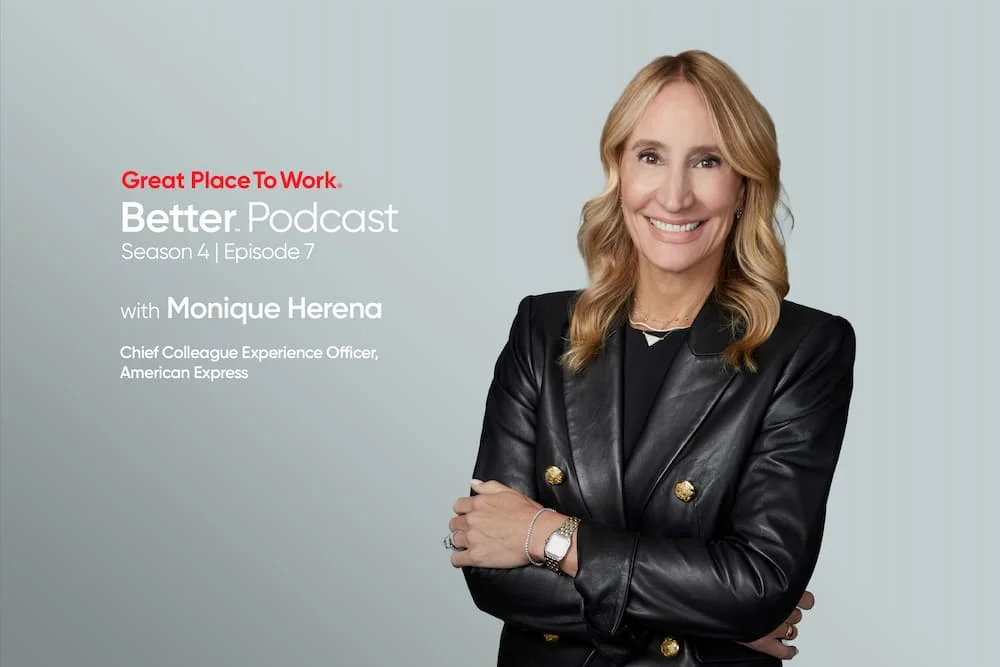
Written by Roula Amire

Written by Ted Kitterman

Written by Great Place To Work
Get fresh culture insights straight to your inbox!

What is diversity, equity, and inclusion?

Variety, as they say, is the spice of life. If diversity is another word for variety, how can it enhance or flavor the world?
Get to know and directly engage with senior McKinsey experts on diversity, equity, and inclusion
Bob Sternfels is McKinsey’s global managing partner and is based in the Bay Area office. Tiffany Burns and Sara Prince are senior partners in McKinsey’s Atlanta office; Michael Chui is a partner in the Bay Area office, where Alexis Krivkovich and Lareina Yee are senior partners, and where James Manyika is a senior partner emeritus; Maurice Obeid , Shelley Stewart , and Jill Zucker are senior partners in the New York office; and Jonathan Woetzel is director of the McKinsey Global Institute and a senior partner in the Shanghai office.
Diversity—through the lenses of race, ethnicity, ability, gender, sexual orientation, neurodiversity, and beyond—can help to strengthen organizations, as studies have shown time and again. Quite simply, diversity, equity, and inclusion (DEI) is used to describe three values that many organizations today strive to embody to help meet the needs of people from all walks of life. While concepts such as biodiversity are important offshoots of the core idea of diversity, this article focuses on diversity, equity, and inclusion in business and society rather than in other contexts.
Companies that are diverse, equitable, and inclusive are better able to respond to challenges, win top talent, and meet the needs of different customer bases. With DEI in mind, companies are considering how to better support employees. Over the past few years, many organizations have taken strides to build diversity, equity, and inclusion into their policies and hiring practices.
What are the differences between diversity, equity, and inclusion?
Diversity, equity, and inclusion are often grouped together because they are interconnected and it is only in combination that their true impact emerges. Some organizations include related concepts, such as belonging, in their DEI strategies. But all of these terms are also easily misunderstood. It’s important to grasp the individual meanings and implications of each of these terms:
Diversity refers to who is represented in the workforce. Some examples of diversity in workplaces include:
- Gender diversity: What makes up the composition of men, women, and nonbinary people in a given population?
- Age diversity: Are people in a group from mostly one generation, or is there a mix of ages?
- Ethnic diversity: Do people in a group share common national or cultural traditions, or do they represent different backgrounds?
- Physical ability and neurodiversity: Are the perspectives of people with disabilities, whether apparent or not, accounted for?
These are a few of the most common examples, but what is considered diverse can range widely. Nobel Prize winner Richard Thaler touches on this in an interview with McKinsey on debiasing the corporation. “There’s lots of talk about diversity these days,” says Thaler. “We tend to think about that in terms of things like racial diversity and gender diversity and ethnic diversity. Those things are all important. But it’s also important to have diversity in how people think.”
- Equity refers to fair treatment for all people, so that the norms, practices, and policies in place ensure identity is not predictive of opportunities or workplace outcomes. Equity differs from equality in a subtle but important way. While equality assumes that all people should be treated the same, equity takes into consideration a person’s unique circumstances, adjusting treatment accordingly so that the end result is equal. In an episode of the McKinsey Talks Talent podcast on the inclusive workplace, McKinsey senior partner and talent expert Bill Schaninger offers a view on the implications of equity when sourcing talent: “There’s a real difference between equal and equitable. Suppose we said, ‘All interns are created equal. We pay them nothing.’ The people who can afford an entire summer without getting paid are likely already coming from a position of privilege.”
- Inclusion refers to how the workforce experiences the workplace and the degree to which organizations embrace all employees and enable them to make meaningful contributions. Companies that are intent on recruiting a diverse workforce must also strive to develop a sufficiently inclusive culture, such that all employees feel their voices will be heard—critical if organizations want to retain their talent and unlock the power of their diverse workforce. In an episode of the McKinsey Talks Talent podcast on the inclusive workplace, McKinsey partner and DEI expert Diana Ellsworth shared an example of how a lack of inclusion can manifest in workplace culture: “The LGBTQ+ community is underrepresented in the workplace, especially at more senior levels. As a result, many feel like an “only” at work and are more likely to experience microaggressions ; they might feel unable to talk openly and comfortably about themselves, for example, or need constantly to correct assumptions about their personal lives.”
Learn more about our People & Organizational Performance and Strategy & Corporate Finance practices.
Why is diversity in the workplace important?
A series of three McKinsey reports shows the impact of diverse workplaces: Why diversity matters (2015), Delivering through diversity (2018), and Diversity wins: How inclusion matters (2020). The latest findings draw from a data set that encompasses 15 countries and more than 1,000 large companies, as well as research on employee sentiment, and the results show a correlative relationship between business performance and diversity. It’s worth noting that greater access to talent and increased employee engagement contribute to this performance effect. The business case for diversity is robust, and the relationship between diversity on executive teams and the likelihood of financial outperformance has gotten stronger over time. And the results have been replicated in further research, for instance, in Latin America and Central Europe .
Some of the key findings from the latest Diversity wins report include the following:
- Most employees support diversity, with overall sentiment on diversity 52 percent positive and 31 percent negative.
- There are clear correlations between diversity and business performance. Analysis of 2019 data shows that companies in the top quartile for gender diversity within executive teams were 25 percent more likely than companies in the fourth quartile to have above-average profitability (up from 21 percent in 2017 and 15 percent in 2014).
- The greater the representation of gender diversity, the higher the likelihood of outperformance. For instance, companies where more than 30 percent of the executives are women were more likely to outperform companies where this percentage ranged from only 10 to 30. The most gender-diverse companies see a substantial differential likelihood of outperformance—48 percent—over the least gender-diverse companies.
- The business case for ethnic and cultural diversity is also strong: in 2019, companies in the top quartile bested those in the fourth quartile by 36 percent in profitability. Notably, the likelihood of outperformance continues to be higher for diversity in ethnicity than in gender.
- Progress in building diverse workforces remains stubbornly slow.
- Despite employees’ support of diversity, there are high levels of negative sentiment on inclusion—namely, equality, openness, and belonging—particularly around equality and fairness of opportunity.

Introducing McKinsey Explainers : Direct answers to complex questions
Even during a crisis, when leaders might be tempted to shelve DEI efforts to ensure the company’s financial survival, there is value to prioritizing diversity, equity, and inclusion. In the words of McKinsey’s Bryan Hancock from McKinsey Talks Talent : “D&I is good business. It doesn’t have to be at the expense of financial outcomes. . . . This isn’t an issue where leaders can say, ‘We can’t do diversity right now, because we’re under a lot of pressure.’ Diversity is one of the things you’ve got to be mindful of in every context.”
What other benefits can organizations realize from inclusion and diversity?
In addition to profitability, there are five key domains in which inclusion and diversity can significantly affect an organization’s overall performance:
- Winning talent: Organizations that monitor the demographic profile of their workforces are better able to retain top performers while making sure that diverse talent isn’t lost.
- Improving the quality of decision making: Diversity brings multiple perspectives to the table during times when enhanced problem-solving skills and vision are needed.
- Increasing customer insight and innovation: Diverse teams are typically more innovative and better at anticipating shifts.
- Driving employee motivation and satisfaction: Research in Latin America showed that companies that are committed to diversity are 75 percent more likely to report a pro-teamwork culture.
- Improving a company’s global image and license to operate: Companies that can maintain or increase their focus on inclusion and diversity during crises are poised to avoid consequences such as struggling to attract talent or losing customers and government support.
How can organizations foster an inclusive workplace?
For companies looking to bolster inclusion and step up their DEI efforts more broadly, five areas of action stand out :
- Ensure that diverse talent is well represented.
- Strengthen leadership accountability and capabilities.
- Be fair and transparent, enabling equality of opportunity.
- Promote openness and tackle microaggressions, bias, and discrimination.
- Foster belonging through unequivocal support for all the ways diversity manifests.
A McKinsey survey about inclusion at work and how to address organizational barriers to it offers unique insight at a more granular level. The research finds that respondents of all backgrounds encounter barriers to feeling included—and that women, respondents who are ethnic and racial minorities, and those who identify as LGBTQ+ encounter additional challenges.
A few key data points from the survey add nuance about the lived experiences of employees in workplaces, inclusive and otherwise:
- Employee engagement is strongly linked with a sense of inclusion. Those who feel very included are more likely than others to say they feel excited by and committed to their organizations.
- Nearly 40 percent of respondents say they have turned down or chosen not to pursue a job because of a perceived lack of inclusion at the organization.
- Over a third of respondents say their organizations don’t put enough effort into creating a diverse, inclusive environment (while only 6 percent say too much is being done).
- A resounding 84 percent of respondents say they have experienced microaggressions at work. More than one in four say they have needed to correct others’ assumptions about their personal lives, for example. High levels of respondents have experienced everyday slights rooted in bias, such as not receiving credit for their ideas, being asked to speak as a representative for a group of people like themselves, or being coached to communicate in a way that feels inauthentic.
- Looking only at LGBTQ+ respondents, 37 percent say they have had an uncomfortable experience coming out to colleagues in the preceding month.
- Among respondents who identified as racial or ethnic minorities, 40 percent of those who indicated they have discussed identity-related issues at work in the preceding month say they have felt at least slightly uncomfortable in those situations.
To serve these workers better, organizations can pay attention to four main factors associated with employees’ inclusion:
- Diverse, inclusive leadership: The presence of diverse leaders at an organization, as well as an organization’s focus on inclusive leadership, are correlated with individuals feeling more included.
- Meritocracy and initiatives to increase fairness in performance evaluations: A meritocratic company culture is strongly associated with a sense of inclusion.
- Sponsorship: Respondents who say colleagues at their organization have gone out of their way to create professional-advancement opportunities for them are also more likely than others to feel a strong sense of inclusion.
- Substantive access to senior leaders: More than half of all respondents say that meaningful interactions with senior leaders have aided their career advancement.
Learn more about our People & Organizational Performance practice.
What is intersectionality?
Intersectionality, a term coined by Professor Kimberlé Crenshaw in 1989 , refers to the ways different parts of one’s identity intersect or overlap with one another. For instance, gender is one aspect of a person’s identity, but so are sexual orientation and race. A Black woman who is queer, or a White woman who has a disability, may take a perspective that acknowledges how those different aspects of their identity overlap or intersect. McKinsey’s Women in the Workplace 2021 report , for instance, found that LGBTQ+ women, as well as women with disabilities, are much more likely than women overall to experience microaggressions on the job.
Acknowledging intersectional identities can strengthen companies and communities more broadly. “Everyone deserves to feel empowered across all aspects of who they are,” says McKinsey senior partner Guangyu Li . “It shouldn’t be left to any individual community to defend itself. It’s in our collective interest to show up for each other with concrete action and to come together in solidarity.”
Allyship is a concept that is closely related to intersectionality. An ally aligns with people in the minority to help foster equitable and inclusive opportunities for all. In corporate America, White women, for instance, may take allyship actions such as mentoring women of color, advocating for new opportunities for them, and actively confronting any discrimination they might face. However, there is a notable disconnect between the allyship actions that women of color say are most meaningful and the actions that White employees prioritize—suggesting opportunities for recentering efforts around the experience of women of color and other marginalized groups.
What issues are important to women in the workplace?
Women’s representation in the corporate world has largely increased in recent years, but the pandemic has affected their participation in the workforce. It is worth noting that dynamics of gender in the workplace may be regionally specific. While much of McKinsey’s work offers insight into women in corporate America, you can explore additional material on global gender equality , as well as gender diversity in Africa , Canada , Central Europe , France , Japan , the Middle East , and other regions.
The largest study of women in corporate America is Women in the Workplace , conducted by McKinsey in partnership with LeanIn.Org. The latest research, now in its seventh year, reflects information from 423 organizations that employ 12 million people, and includes responses from more than 65,000 people surveyed on their workplace experience, as well as in-depth interviews with women of diverse identities.
Findings from the Women in the Workplace 2021 report include the following:
- Women’s representation in the corporate pipeline (that is, the journey an employee might take from starting as an entry-level worker to advancing to a spot in the C-suite) has increased since 2016. But women—and women of color in particular—remain significantly underrepresented in leadership.
- At every step in the career ladder, women of color lose ground to White women and men of color.
- The “broken rung” problem remains a challenge for women, particularly those seeking their first step up from entry level to manager. For every 100 men promoted to manager, only 86 women are promoted.
- Burnout, stress, and exhaustion continue to affect women more than men. In the past year, one in three women considered leaving the workforce or downshifting their career, a notable increase from levels seen early in the COVID-19 pandemic.
- Women leaders are doing considerable work to support DEI efforts and employee well-being more broadly, but they’re not necessarily being recognized for it. For instance, employees with women managers are more likely than others to say that their manager has supported and helped them in the past year; women leaders also spend more time than men on DEI work that’s outside their formal job responsibilities. Less than a quarter of companies, though, recognize this work in performance reviews, for example.
To support women in the workplace, companies need to invest deeply in all aspects of diversity, equity, and inclusion. Although there are no quick fixes, there are some steps companies should take to empower women at work :
- Companies should put more practices in place to ensure that promotions are equitable. Beyond reducing potential bias in the hiring process, companies need to extend similar rigor to performance reviews.
- Organizations need to track representation and hiring and promotion outcomes more fully. A company may track representation for women overall, but does it break those numbers down to look at representation for women on color in particular?
- Companies need to double their efforts when it comes to accountability. Only two-thirds of companies hold senior leaders accountable for progress on diversity goals, and less than half consider progress on diversity metrics in performance reviews.
- To create a culture that embraces and leverages diversity, companies need to promote senior-level sponsorship, with top leaders fully and publicly supporting DEI efforts, modeling inclusive leadership, and actively participating in training and events.
- Spurring high employee engagement will also be crucial. Raising awareness of the barriers that many women face can help, and further training (on bias, antiracism, and allyship) can take employees from awareness to action.
- Burnout is on the rise, and investing in solutions to help address this problem will remain a crucial issue for many organizations. In addition to expanding on successful established policies and trying new approaches, companies can track symptoms and establish new norms to improve the everyday experience of employees.
What do we know about advancing racial equity for Black Americans in the US private sector and across society?
Black Americans in the workforce are at a disadvantage; the median annual wage for Black workers is approximately 30 percent, or $10,000, lower than that of White workers, with serious implications for economic security, consumption, and the ability to build generational wealth. They are underrepresented in higher-wage industries and executive roles, and they face lower odds for advancement. Clear racial patterns exist across the US labor force, with nearly half of Black workers concentrated in low-paying healthcare, retail, food services, and accommodations roles.
There are many benefits to righting historical wrongs and realizing the full potential of Black American talent: addressing wage disparities alone, for instance, could propel two million Black Americans into the middle class for the first time.
Doing so will take effort on many levels. Research from the McKinsey Institute for Black Economic Mobility suggests some jumping-off points:
- Consumer-facing companies that pursue broader racial-equity goals can better serve Black consumers .
- Harnessing the power of retail can drive demand for Black-owned brands .
- Addressing racial disparities in farming could generate billions in value for the agriculture industry.
- Increasing financial inclusion to broaden services for Black Americans could yield $2 billion in potential revenue, and changes in three key areas can help companies make more progress toward racial equity in financial services .
- Supporting historically Black colleges and universities can accelerate Black economic mobility .
- Understanding Black representation in film and TV could help drive greater diversity.
- Building supportive ecosystems for Black-owned business could add $290 billion in business equity.
- Emphasizing health equity can activate meaningful change or even help retain talent .
The stories of Black leaders’ journeys can offer inspiration and hope for personal and professional development. Get insight from Jason Wright (president of the National Football League’s Washington Commanders), Stephanie Hill (an executive vice president at Lockheed Martin), and Barry Lawson Williams (the founder of Williams Pacific Ventures).
What issues are important to Latinos in the workplace?
In the United States, Latinos make up 18.4 percent of the population and 17.3 percent of the labor force, and that share is projected to rise to more than 30 percent by 2060. This community faces challenges, and US- and foreign-born Latinos alike remain far from equal with non-Latino White Americans, with Latino Americans earning just 73 cents for every dollar earned by White Americans. They face discrimination in securing financing to start and scale businesses, and they face challenges accessing food, housing, and other essentials.
McKinsey research on the economic state of Latinos in America finds that they are underpaid, collectively, by $288 billion a year. At full parity, though, Latinos could spend an extra $660 billion annually, and Latino businesses could generate trillions in revenue and support millions of new jobs, while also creating new flows of generational wealth. Addressing barriers faced by Latinos in America could make the economy more robust for all.
How can we empower Asian Americans at work?
Asian Americans have contributed to the US economy since the 1800s, yet they have historically been overlooked. This group as a whole is often perceived as the “model minority,” a term that diminishes the unique issues faced by their diverse community. Recently, given the rise in racially motivated attacks on Asian Americans during the COVID-19 pandemic, historically unaddressed challenges faced by this group are coming to light , offering a fresh reminder of the need to support and include Asian Americans at work.
In corporate America, Asian Americans are underrepresented in senior leadership roles (as are Black, Hispanic, and Latino Americans). What might help? Recognizing where in the corporate pipeline Asian Americans are underrepresented, mitigating implicit and unconscious bias during promotion and performance evaluations, fostering sponsorship for Asian American employees, and expanding workplace flexibility and support such as paid sick leave.
Learn more about our Public & Social Sector practice.
What does research show about the experiences of LGBTQ+ employees in the workplace?
For LGBTQ+ employees , many workplaces today fall short of full inclusion, even if there is visible corporate support for LGBTQ+ communities. For example, LGBTQ+ women are more underrepresented than women generally in America’s largest corporations. Just four LGBTQ+ CEOs head these corporations—only one woman, and none identifies as transgender. An episode of the McKinsey Talks Talent podcast considers the latest research on the LGBTQ+ experience in the workplace and highlights practical steps for all employees to signal support and boost progress for this community.
Transgender employees face a unique set of challenges. They earn 32 percent less money than cisgender employees ( cisgender refers to people whose gender identity aligns with the sex assigned to them at birth). More than half of transgender employees say they are not comfortable at work, and they report feeling less supported by managers. These strong feelings of exclusion have significant economic implications: greater transgender inclusion in the workforce through wage equity and increased employment could boost annual consumer spending by $12 billion a year. To help address the issues, companies can be intentional in recruiting (for example, by asking applicants what pronouns or names they prefer to use) or offer trans-affirming benefits, among other actions.
How do different industries approach diversity, equity, and inclusion?
Different industries may well need to take different approaches to diversity, equity, and inclusion, depending on the composition of their workforces. Several articles offer insight into those industry-specific dynamics, especially with regard to gender diversity:
- Companies can repair the broken rung on the career ladder for women in technical industries and roles .
- Organizations can work to close gender and race gaps in the US financial-services sector .
- Voices from the fashion industry on diversity offer insight on what actions might be most meaningful for creating more inclusive workplaces.
- Organizations can make traveling in cities safer and more comfortable for at-risk groups .
- The COVID-19 pandemic hit the education space hard; as the recovery continues, ensuring that education is equitable and inclusive will be vital.
- In the public and social sectors , women are increasingly represented, but they are also feeling burned out—a few actions can bend the curve.
- Consumers are expecting more from brands than ever before— here’s what retailers can do to meet DEI needs .
- Private equity can help catalyze DEI efforts to transform the global business community and improve returns.
- In media and entertainment , women remain locked out of top roles.
- While women in healthcare and life sciences have made progress, they remain underrepresented at senior levels.
- Research from the oil and gas industry suggests actions for the sector to consider to help attract and retain women.
- Women are leaving the mining industry . Here’s why—and what companies can do about it.
Learn more about our Technology, Media & Telecommunications , Financial Services , Travel, Logistics & Infrastructure , Education , Public & Social Sector , and Healthcare Systems & Services practices.
For more in-depth exploration of these topics, see McKinsey’s collection of insights on diversity and inclusion . Learn more about Diversity, Equity & Inclusion consulting at McKinsey—and check out DEI-related job opportunities if you’re interested in working at McKinsey.
Articles referenced include:
- “ Being transgender at work ,” November 10, 2021, David Baboolall, Sarah Greenberg, Maurice Obeid , and Jill Zucker
- “ Women in the Workplace 2021 ,” September 27, 2021, Tiffany Burns , Jess Huang, Alexis Krivkovich , Ishanaa Rambachan , Tijana Trkulja, and Lareina Yee
- “ The economic state of Black America: What is and what could be ,” June 17, 2021, Shelley Stewart III , Michael Chui , James Manyika , JP Julien , Vivian Hunt, Bob Sternfels , Jonathan Woetzel , and Haiyang Zhang
- “ COVID-19’s impact on Asian American workers: Six key insights ,” May 6, 2021, Grace Hua, Jess Huang, Samuel Huang, Lareina Yee
- “ The elusive inclusive workplace ,” March 23, 2021, Bryan Hancock and Bill Schaninger
- “ Diversity wins: how inclusion matters ,” May 19, 2020, Sundiatu Dixon-Fyle , Kevin Dolan, Vivian Hunt, and Sara Prince

Want to know more about diversity, equity, and inclusion?
Related articles.

Diversity wins: How inclusion matters

The elusive inclusive workplace

Women in the Workplace 2022
- SUGGESTED TOPICS
- The Magazine
- Newsletters
- Managing Yourself
- Managing Teams
- Work-life Balance
- The Big Idea
- Data & Visuals
- Reading Lists
- Case Selections
- HBR Learning
- Topic Feeds
- Account Settings
- Email Preferences
5 Strategies to Infuse D&I into Your Organization
- David Lancefield

One-off initiatives aren’t enough.
There’s widespread agreement on the need to improve diversity and inclusion in the workplace. But it’s not easy to deliver on the promises made. It’s time to adopt a more systematic, coherent approach to D&I. The authors offer five strategies for making more progress and creating a more representative, fair, and high-performing workforce. First, ensure the CEO positions themselves as the top champion for D&I efforts. Second, center D&I in your business strategy. Third, hold executive leaders accountable for D&I outcomes. Fourth, mitigate implicit bias at the systemic level. Finally, pivot from diversity training to leadership development coaching.
There is broad agreement that diverse and inclusive workplaces are a good thing. These environments value all employees’ contributions and reflect the demographic characteristics of the available labor force.
Put most simply, it’s the right thing to do. Additionally, diverse and inclusive companies find and nurture the best talent , increase employee engagement , and improve customer willingness to buy.
But there is a long way to go. The killing of George Floyd in May 2020 was a clarifying catalyst that helped business leaders see the enormous inequities that have always existed. A year later, stakeholders (including current and prospective employees and customers) want to know if companies have lived up to the big promises they made last summer.
Opportunities for Midsize Businesses in 2021
Historically, people of color have faced the following vast disparities in the workplace:
Lower-than-expected hiring rates . White job applicants tend to receive more callbacks than equally qualified applicants of other races. Hiring rates (the number of hires as a percentage of the total number of candidates) for Black and Hispanic Americans did not improve between 1990 and 2015.
Lower-than-expected representation in white-collar and leadership jobs. People of color are overrepresented in lower-paying jobs and underrepresented in top leadership roles. Asian Americans and Pacific Islanders (AAPI) are the least likely to be promoted to management and executive levels in Silicon Valley high-tech jobs compared to other groups. A total of 21 Black Americans have held Fortune 500 CEO positions, including the five who currently hold the top spot. Although the number of Hispanic Fortune 500 CEOs is increasing, they still represent less than 4% of those 500 CEO slots. There are no Black chairs, CEOs, or CFOs of companies in the FTSE-100 .
Negative day-to-day experiences at work. Employees of color consistently report less-positive experiences at work than their white colleagues. About 31% percent of AAPI employees and 25% of Hispanic and Black employees experience stereotypes and bias at work. Black employees say they’re treated less fairly and get less support to advance. Black female employees feel less valued and less respected than employees of other races and ethnicities.
During 2020 and so far in 2021, many companies, including McDonald’s , Microsoft , Boeing, and Best Buy, made pledges to improve diversity hiring practices and introduce diversity and inclusion (D&I) training. The hiring of D&I professionals in general spiked, too; more than 60 U.S. companies appointed their first-ever chief diversity officer (CDO).
However, much of this work has not yet taken root. In one recent survey , 93% of leaders agreed that the D&I agenda is a top priority, but only 34% believed that it’s a strength in their workplace. In another survey , 80% of HR professionals viewed companies as “going through the motions.” In other words, they didn’t notice any significant positive impact from the organizations’ actions. Another survey revealed that while 78% of Black professionals believe senior leaders’ D&I efforts are well-intentioned, 40% hear more talk than action and have not noticed material changes to policies or culture. Meanwhile, many CDOs leave their roles because of a lack of strategic, financial, and political support.
It’s time for a new approach
Boards and CEOs are facing more pressure from investors to deliver on their D&I promises. Several asset managers, including New York City Employees’ Retirement System and Black Rock, have asked corporations to release their workforce gender, racial, and ethnic composition data as a way to incentivize change.
One-off D&I “initiatives” do not effectively address these long-standing disparities. Instead, leaders should infuse D&I throughout their organizations. Based on our experience and research, we have developed five strategies that can turn D&I into an improved employee experience and a strategic advantage for the enterprise.
Ensure the CEO positions themselves as the top champion for D&I efforts
The CEO needs to take a public stance, embed D&I in the organization’s purpose, exemplify the culture, and take responsibility for progress toward goals. They need to be out front, even if a CDO is part of the team.
PwC’s U.S. chairman, Tim Ryan, has been an exemplar for at least five years. He co-founded CEO Action for Diversity and Inclusion after police shootings in the summer of 2016 to spur business executives to collective action on D&I. The publication of PwC’s workforce diversity data in 2020 revealed that women and people of color are underrepresented, especially at senior levels, showing that even the most dedicated companies still have a lot of D&I work to do.
Nielsen’s CEO, David Kenny, added the CDO title to his leadership portfolio in 2018 so he could “ set hard targets for ourselves and make those transparent to our board and measure them like we measure other outcomes like financial results.” He relinquished that title to a new CDO in March 2020, noting the D&I progress his team had already made.
If you’re a board member, you have an essential role to play in D&I governance. You should make sure there is action and change that employees can see and feel. You should be asking your CEO questions about:
- The current experience and representation of non-white groups.
- Their leadership on the D&I strategy and goals.
- Their visibility to employees and the community regarding these matters.
- The progress the company is making on D&I goals.
You should also evaluate the impact, stance, and activities of new CEO candidates in their previous roles and their D&I ambitions and plans should they be appointed.
Center diversity and inclusion in the business strategy
D&I is far more than an “HR issue.” It should be a core ingredient in the design and execution of business strategy and embedded in the activities of the organization day in, day out. Increasing the number of non-white individuals involved in the strategy process will help develop a core purpose that better reflects a broader group of customers and employees. It also gives the organization more opportunities and places to succeed.
Alex Gorsky, chair and CEO of Johnson & Johnson, who has put D&I at the center of his pursuit of sustainable competitive advantage, said , “The best innovations can only come if our people reflect the world’s full diversity of individuals, opinions, and approaches.” A diverse design group is more likely to create products and services that work for a diverse clientele, avoiding biased assumptions, generalizations, or shortcuts. When organizations test products and services on a diverse group of potential clients and employees, it’s easier to identify the variations necessary to enhance the adoption of the final offering. And, when a company has an enterprise-wide D&I strategy, leaders can use it to guide the selection of operating ecosystem partners that are aligned with its D&I intentions.
Channel 4 , the UK television company, announced a strategy “to shift focus to authentic portrayal and representation, allowing audiences to recognize themselves on-screen.” This effort even extended to “helping (its) partners and suppliers become more confident in inclusion and diversity” by providing a written guide to employing people with disabilities. In addition, CEO Alex Mahon set out six commitments to anti-racism that focused on on-screen talent, content, business model (advertising), supply chain, and overall workforce. She told David:
Channel 4 is unique because we have the principle of diversity written into our remit by Parliament. We don’t only pursue diversity and inclusion because of the remit, or because it’s the right thing to do, we also do it because we know it makes us a better business. We find — delightfully — that it brings us genuine competitive advantage: We attract and retain people of creative and commercial brilliance through our creative freedoms and audiences seek out our independent voice and noisy content.
As an illustration of this approach, Channel 4 announced plans for “Black To Front,” a day this coming September where its entire programming schedule will highlight Black talent, both behind and in front of the camera.
Hold executive leaders accountable for driving D&I outcomes
John Doerr opined in his book Measure What Matters that “Ideas are easy. Execution is everything.” Organizations can use his objectives and key results (OKRs) concept to encourage and incentivize meaningful D&I outcomes.
Give each functional leader and business unit leader formal accountability for achieving two sets of D&I results in their part of the business: diversity results that focus on representation (such as hiring, promotion, and mobility outcomes) and inclusion results that focus on day-to-day experience (such as employee engagement, equity, and psychological safety outcomes). Many large employers, including Starbucks and McDonald’s, are already working on defining key performance indicators for D&I. BBC Director-General Tim Davie has stipulated that each leader’s performance and progress will be assessed based on gender, ethnicity, disability, and LGBTQ+ equity goals.
Make sure to give those accountable business leaders access to best-practice organizational development, talent development, and D&I resources to help them achieve these OKRs, in partnership with the CDO and chief human resources officer (CHRO). All of this has to be considered a fundamental part of the day job, not an “out-of-hours” activity — executive leaders must provide the requisite time and resources to get the job done. Finally, executives must establish how they will reinforce desired leader behavior and what consequences they will introduce when outcomes don’t align with the stated goals.
Mitigate implicit bias at the systemic level
Calvin Lai ’s research indicates that organizations should focus on mitigating systemic bias embedded in talent management and other decision-making processes rather than focusing primarily on eliminating individual bias.
Many hiring, selection, and career mobility processes operate in ways that could unintentionally increase bias. For example:
- Recruiters only advertise jobs to a narrow range of potential candidates or only reach out to certain schools and universities.
- Hiring managers use selection criteria that don’t relate to performance on the job, such as automatically ranking employee referrals higher than other candidates.
- Managers give high-visibility work only to in-group team members and promotions to those who “know somebody.”
- Managers don’t select people of color for client-facing or revenue-generating jobs that can lead to C-suite roles.
To address these biases, undertake a thorough investigation of talent management policies and processes to understand which ones limit opportunity. Then identify what leaders, managers, human resources, and D&I professionals should stop, change, or redesign.
Pivot from diversity training to leadership development coaching
One-shot diversity training programs that focus solely on reducing implicit bias do not typically result in sustained behavior change . Instead, diversity training is most effective when it’s part of an enterprise-wide strategic approach, includes both awareness and skills development, and is conducted over time.
It’s also essential to focus on coaching managers to enhance their relationships with those they lead since the most significant driver of employee engagement is manager behavior. Organizations can train managers to personalize their interactions with their teams so that they’re more likely to create psychological safety and make equitable decisions regarding the processes they control, including pay , performance measurement , promotions , and work assignments .
These new leadership behaviors should positively impact employee engagement, equity, and psychological safety, which leaders can then measure, track, and incentivize using the OKR approach.
There’s widespread agreement on the need to improve diversity and inclusion in the workplace. But it’s not easy to deliver on the promises made. It’s time to adopt a more systematic, coherent approach. By following these five strategies, leaders can make more progress and create a more representative, fair, and high-performing workforce.
- Gena Cox , PhD, is an organizational psychologist, leadership strategist, and professional speaker. She advises executive leaders who are redefining the role they play in driving diversity and inclusion strategy. Her book on the subject will be published in 2022. You can reach her at Feels Human, Inc ., where you can download the Inclusion Infusion Index, or follow her on LinkedIn .
- David Lancefield is a catalyst, strategist, and coach for leaders. He’s advised more than 40 CEOs and hundreds of executives, was a senior partner at Strategy&, and is a guest lecturer at the London Business School. Find him on LinkedIn (@davidclancefield) or at davidlancefield.com , where you can sign up for his free “Mastering Big Moments” workbook .
Partner Center
Essay: Diversity in the workplace
Ieee account.
- Change Username/Password
- Update Address
Purchase Details
- Payment Options
- Order History
- View Purchased Documents
Profile Information
- Communications Preferences
- Profession and Education
- Technical Interests
- US & Canada: +1 800 678 4333
- Worldwide: +1 732 981 0060
- Contact & Support
- About IEEE Xplore
- Accessibility
- Terms of Use
- Nondiscrimination Policy
- Privacy & Opting Out of Cookies
A not-for-profit organization, IEEE is the world's largest technical professional organization dedicated to advancing technology for the benefit of humanity. © Copyright 2024 IEEE - All rights reserved. Use of this web site signifies your agreement to the terms and conditions.
Español
Français
Do you need sales incentives to inspire or reward your employees?
A gift card from GoGift can do exactly that!
GIFT CARDS FOR SALES INCENTIVES
Are you tired of giving the same old-school, impersonal cash rewards to your well-performing employees?
Start giving a more personal gift, such as a gift card from GoGift, that can not only reward but also motivate your employees. Read more about how gift cards can be the perfect addition to your sales incentives programs below.

What is a sales incentive?
An incentive is, in other words, a reward. It can motivate and encourage your employees to perform better , feel good about themselves, and it can, in general, lead to better well-being of your employees.
BENEFITS OF USING SALES INCENTIVES
Create motivation and better employee satisfaction.
Sales incentives are often used to motivate employees in the sales team or to acquire better customer loyalty. The idea of a sales incentives program is to reward great performances individually or team-wise. When people are rewarded for an excellent effort, they feel motivated to keep on working to achieve their goals. Also, sales incentives make the employees feel appreciated.

GIFT CARDS AS SALES INCENTIVES
A sales incentive for all.
A sales incentive is not just cold cash rewards; it can also be an object, an item of value, an event, or a desired action. Whatever your colleagues are inspired by, you can find it at GoGift : We have experienced that a gift card is a perfect choice for sales incentives due to the large selection of different things that our gift card gives access to.
With our Global Gift Card, your employee or customer has a free choice to choose if the gift card should go to a dinner with family or friends , new clothing , a new exciting experience , or something completely different. The selection is big , and we guarantee that there is something for all of your workers.

Why use Gift Cards for sales incentive?
There are a lot of good reasons for using gift cards as sales incentives. And because of the flexibility of The Global Gift Card from GoGift, you can use it for all kinds of sales incentives. Give it to your sales team members for good performances or send your regards to a new business partner.
No matter what reason you have to use a sales incentive or make a sales incentives program, it is a win-win situation : Your employees win because they are rewarded for their hard work, and your company wins because it is more likely to achieve the company goals.
You can read more about how you can use a gift card for sales incentives below.
Employee Awards
Have your sales team performed above average? A great way to reward and motivate your employees, even more is by giving them a gift card to spend on whatever they want, however, and whenever they like.
Consumer Promotion
A great way to create better customer loyalty is by giving gift cards that your clients can use how they want. You can also raise customer satisfaction with a gift card from GoGift. If you have international business partners, remember our Global Gift Card is cross-borders and cross-currencies - read more about this further down the page.
Festive Gifting
Congratulate your employees on a good, profitable year on New Year’s Eve, or celebrate the festive days with a gift card from GoGift. It is the perfect way to send your coworkers home with motivation and happiness running through their veins.
Retention Programs
A gift card now and then can help you maintain your most valuable assets: Your employees. Employee satisfaction costs time and money, and an easy way to raise the satisfaction of your employees is to give a gift card for them to spend how they want.
Sales incentives increase the overall perfromance!
Studies show that sales incentive programs aimed at individual workers increase performance by 22 per cent, and programs aimed at teams increase performance by a staggering 44 per cent . No matter how you choose to reward your employees, you are most likely to gain from it. Start by giving gift cards from GoGift that can be used by everyone on a lot of different things.
YOUR ONE-STOP SOLUTION
The global gift card from gogift.
Are you looking to boost sales, motivate employees or gain a higher customer value? Then the Global Gift Card is the solution for you. Our Global Gift Card is the absolute, most popular gift card for businesses as it can be used for motivation and rewards. And what better way to reward your employees than a gift they will appreciate and love?
With the Global Gift Card, you can freely choose the card’s value, and the receiver has a free choice of where the card should be used and on what.

A gift that can travel across borders!
With The Global Gift Card, you can send thoughts, presents and motivation across borders and get the card’s value transferred to another currency. That means; if you have bought a card in one country, it can be transferred to another country and another valuta . You can buy as many gift cards as you want, customise and personalise them, and we are responsible for the delivery to all the countries where you have employees. It has never been easier to create a sales incentives program for your entire international business.

A gift card that gives access to different things
When your employees receive the Global Gift Card, they are free to choose between all the different stores, webshops and experiences that can be found at GoGift. That way, you are sure to give a gift that your employees can find a use for.
The gift card has a long expiration date , so the receiver can take their time selecting from the wide variety of shops and experiences that can be found at GoGift.
Market Leader
Empowering Diversity in the Workplace: Strategies for Inclusion and Success
Do you want to learn more about diversity and inclusion in the workplace? Then you’ve come to the right place.
We uncover the essence of diversity and inclusion, explore practical tips, and learn about 8 effective strategies for fostering an inclusive and diverse workplace. Discover how to overcome common challenges and empower your organization with insights for creating a thriving workplace.
Let’s begin!

What is Diversity and Inclusion?
Diversity refers to the rich tapestry of individual characteristics, spanning personal, physical, and social dimensions. It includes aspects like gender, ethnicity, age, and educational background.
Diversity in the workplace creates a dynamic environment where employees bring unique perspectives and experiences to the table.
On the other side of the coin, we have inclusion, which involves the intentional efforts made by organizations to create a workplace where every individual feels integrated and valued. It's not just about having diverse voices but ensuring that each voice is heard, respected, and embraced.
Inclusion strategies aim to cultivate an atmosphere where everyone is comfortable sharing their thoughts and contributing without hesitation.
In Other Words…
Diversity is the “what” – the acknowledgment of differences among individuals.
Inclusion is the “how” – the deliberate actions taken to ensure everyone feels accepted and can actively participate in the workplace.
Together, they form a powerful combination that promotes a thriving and innovative work environment
Types of Workplace Diversity
Understanding and promoting workplace diversity is crucial for fostering an inclusive environment.
Here are practical tips to contribute to a more diverse workplace:
Open Dialogue: Encourage discussions with employees about the advantages of diversity in the workplace.
Address Bias: During the recruitment process, be mindful of biases. Ensure hiring managers recognize the value that candidates from diverse backgrounds bring and maintain a fair hiring process. Clearly communicate your commitment to equal rights.
Value Individual Skills : Acknowledge and leverage the unique skills each employee brings. Utilizing diverse strengths can help expand your market and contribute to company growth.
Flexible Work Options: Provide flexible work arrangements and offer parental leave for both men and women to support work-life balance.
Why is Diversity Important in the Workplace?

Let’s talk a bit about the importance of diversity in the workplace, as it brings numerous benefits to both individuals and organizations.
According to research by McKinsey & Company , companies with diverse teams in gender or race are more likely to have financial returns above their national industry medians.
While embracing diversity doesn’t guarantee increased profits, the research shows that it often signifies overall success.
Companies committed to diversity tend to:
Attract top talent
Enhance customer focus
Boost employee satisfaction
Improve decision-making
All these positive outcomes create a cycle of increasing returns.
Additionally, diversity, in other aspects, like age, sexual orientation, and global experience, can likely provide a competitive edge for companies that can attract and retain such talent.
8 Steps Towards Diversity in the Workplace
Boosting diversity and engagement in your workforce involves targeted initiatives and operational improvements.
Below are eight effective strategies you can implement.
1. Tackle Unconscious Bias
Unconscious biases, shaped by backgrounds and societal norms, impact decisions in hiring and daily interactions. A Frontline Workforce survey reveals that 24% of employees left their last job due to toxic management. This highlights the negative impact on job satisfaction and overall well-being.
Toxic management often results from unconscious biases, leading to unfair treatment or discrimination.
You can address this by raising awareness through interactive training sessions, using real-life scenarios and role-playing to illustrate biases’ influence on decision-making.
2. Prevent Toxic Management
Toxic management negatively affects employee satisfaction, well-being, and the overall work environment. It can emerge from unconscious biases, resulting in unfair treatment or favoritism.
Raising awareness and implementing interactive training sessions are crucial to addressing this issue. You can also establish clear communication channels, regular check-ins, and anonymous feedback surveys to foster an open environment for constructive dialogue, building trust and mutual respect between managers and their teams.
3. Embrace Intersectionality for Cultural Diversity
Workplace diversity extends beyond individual differences – it involves recognizing the interplay of identities and experiences.
Studies from the University of Tennessee show that intersectionality underlines negative experiences for individuals with multiple disadvantaged identities, leading to reduced morale and productivity, along with higher turnover rates.
To foster inclusivity, you can actively promote cultural diversity through inclusive practices like celebrating diverse holidays.
Educational programs can also enhance cultural awareness and empathy, fostering stronger relationships. And establishing affinity groups and mentorship programs provides tailored support, creating a sense of community and empowerment, which in turn can impact employee engagement and overall satisfaction.
By embracing intersectionality and supporting diversity initiatives, your organization can create an inclusive and equitable work environment where every individual feels recognized, appreciated, and empowered.
4. Improve Diversity in Hiring
DEI stands for Diversity, Equity, and Inclusion, representing crucial principles in creating a workplace that embraces differences, ensures fairness, and fosters a sense of belonging.
When applying DEI to the hiring process, your organization can prioritize:
Diverse Hiring Panels: Form committees with individuals from various backgrounds to reduce unconscious bias and ensure fair candidate evaluations.
Blind Hiring Practices: Withhold personal details like name and gender during screening to focus solely on qualifications, mitigating bias for a more equitable assessment.
Structured Interview Questions: Use questions based on competencies and qualifications to foster an objective evaluation process, minimizing subjective opinions.
Actively seek diverse candidates through collaborations with professional organizations, participation in targeted job fairs, and use of diverse recruitment platforms.
A healthy work-life balance is about making sure the boundaries between work and personal life don’t blur. If they do, it can lead to burnout, stress, and disengagement.
A study by Gallup showed that unhappy employees have a 61% higher likelihood of burnout and a 48% higher likelihood of experiencing daily stress.
As a leader, you play a decisive role in promoting a work culture that values work-life balance. You can do this by offering flexible hours, remote work options, and encouraging a more results-oriented approach to performance.
5. Gather Employee Insights with Surveys
Do you want to know what your employees think? Then try simply asking them!
Surveys offer a confidential space for employees to express opinions and suggestions, providing valuable insights.
With employee surveys, you show your employees your commitment to listening to them and foster transparency and continuous improvement in the workplace.
6. Raise Awareness
To foster an inclusive workplace, you must create awareness and enhance knowledge of inclusive behavior. Organize special information sessions, round table debates, or invite experts.
You can also consider dedicating a Diversity and Inclusion (D&I) month to initiate meaningful discussions and provide examples to recognize exclusive behaviors. This will help encourage team members to reflect on their personal biases.
Another idea is to reiterate the company’s fundamental values, guidelines, and established procedures, emphasizing the available communication channels for addressing inclusivity concerns.
Offer clear guidelines on proactive contributions that individuals can make to nurture a culture that embraces diversity and inclusion.
7. Promote Inclusive Leadership

While fostering inclusion is a shared responsibility, leaders play a pivotal role as cultural ambassadors and influential role models.
Inclusive leaders establish a secure team atmosphere where every employee feels comfortable expressing their thoughts, knowing they will be valued. These leaders actively seek input from all employees, appreciating diverse backgrounds and expertise.
Their skills lie in promoting positive collaboration, empowering individuals, navigating team conflicts, and transforming diversity into strengths.
That’s why it’s a good idea for you to implement dedicated leadership training and coaching programs to integrate inclusive leadership as a habitual practice within the organizational framework.
8. Establishing Diversity Goals and Metrics

Establishing clear diversity goals is essential to fostering a diverse and inclusive workplace. These goals not only provide a shared vision but also serve as guiding principles for organizational strategies and decision-making.
To measure progress and foster accountability, you can employ measurable metrics, including workforce demographics and leadership representation. Transparent communication is a key component here, contributing to building trust, attracting diverse talent, and enhancing the organization’s reputation.
It’s important to regularly assess and make necessary adjustments, ensuring continuous improvement and maintaining legal compliance. Involving employees in this process empowers them and fosters a collective responsibility for creating a diverse and equitable workplace.
This dynamic and cohesive approach, rooted in clarity and accountability, solidifies your commitment to diversity and inclusion
Overcoming Challenges to Diversity in the Workplace

We’ve covered how to implement diversity in the workplace.
But then, what do you do if challenges arise that hinder progress and create barriers to achieving a truly diverse and inclusive workforce?
Let’s explore common obstacles and effective strategies to overcome them here!
Challenge #1 : Resistance to Change
Some employees and leaders may resist diversity initiatives due to fear of the unknown or a misconception that it threatens existing norms.
To overcome this, emphasize the benefits of diversity, such as improved creativity, innovation, and overall organizational success. Encourage open communication to address concerns and provide guidance on the positive impact of inclusion.
Challenge #2 : Unconscious Bias
Unconscious biases can persist despite awareness efforts.
Continuous training and education programs are vital to help individuals recognize and overcome their biases. Implementing blind recruitment processes and diverse hiring panels can also minimize bias in decision-making.
Challenge #3 : Lack of Inclusive Policies
Without clear and inclusive policies, diversity efforts may lack direction.
Ensure your organization has well-defined diversity and inclusion policies addressing hiring practices, promotions, and overall workplace behavior. Regularly review and update these policies to stay aligned with evolving societal expectations.
Challenge #4 : Inadequate Leadership Support
Leadership commitment is crucial for the success of diversity initiatives.
Foster a culture of inclusivity starting from the top, with leaders actively promoting and participating in diversity programs. Provide leadership training to ensure executives understand diversity’s importance and actively support its integration into the organizational culture.
Challenge #5 : Lack of Measurement and Accountability
Without clear metrics and accountability measures, it’s challenging to assess the impact of diversity initiatives.
Establish key performance indicators (KPIs) related to diversity goals, regularly evaluate progress, and hold individuals and teams accountable for fostering an inclusive workplace.
Challenge #6 : Tokenism
Merely having diverse individuals present without providing equal opportunities for participation and advancement can lead to tokenism, where individuals from underrepresented groups may feel their inclusion is merely symbolic rather than substantive.
To avoid this, ensure that diversity efforts go beyond representation and focus on creating an inclusive environment where every individual has a meaningful role and voice.
About GoGift

GoGift, a leading global provider of gift card solutions, specializes in offering innovative and versatile gift card services to over 15.000 corporate clients worldwide. With a commitment to simplifying the gift-giving process, GoGift provides a broad range of gift card options from numerous popular brands, catering to a diverse array of tastes and preferences. Their services are designed to enhance the gifting experience, making it more convenient, personal, and enjoyable for both the giver and the recipient.
For more detailed information about GoGift, please visit their official website: https://www.global.gogift.com/
Related Posts
5 Employee Experience Trends of 2024 for a Thriving Workplace
10 Rewarding Strategies: Cultivating Creativity and Innovation in the Workplace with Gift Cards
Future-Proofing Fidelity: Making Long-Term Employee Recognition Programs a Priority
header.all-comments

IMAGES
VIDEO
COMMENTS
Workplace inclusion, diversity, and belonging have developed into crucial components of a philosophy that permeates all enterprises. Due to the value they provide, hose concepts swiftly ascend to the forefront of enterprises' priorities. They not only help to create more content, open-minded, and productive staff, but they also enhance the ...
Introduction. Diversity is a term that describes the differences among people, whether they are cultural, ethnic, racial, linguistic, gender, or sexual orientation differences. While diversity is often celebrated, it can also pose challenges, especially in institutions such as schools, workplaces, and governments.
Tell a story about how your background, identity, or experience has impacted you. While you can briefly mention another person's experience to provide context, be sure to keep the essay focused on you. Admissions officers are mostly interested in learning about your lived experience, not anyone else's. Example.
Diversity and Inclusion Efforts That Really Work. Five best practices. by. David Pedulla. May 12, 2020. Rusty Hill/Getty Images. Summary. A Stanford and Harvard professor convened a symposium on ...
The value of DEI efforts at work. A majority of workers (56%) say focusing on increasing diversity, equity and inclusion at work is mainly a good thing; 28% say it is neither good nor bad, and 16% say it is a bad thing. Views on this vary along key demographic and partisan lines. Half or more of both men and women say focusing on increasing DEI ...
A Leadership Guide to Diversity & Inclusion in the Workplace. 12 Feb 2024 by Kirsty Gardiner, Ph.D. Establishing a diverse, equitable, and inclusive workplace is a moral and strategic imperative that should propel DEI efforts to the top of organizations' to-do lists. Despite mounting evidence that demonstrates the substantial benefits of ...
diversity and inclusion is, why we should be interested in it, and we can become. 35. inclusive. The inclusion of diverse employees i s not simply something that is. 'nice' to do, rather is ...
The term " diversity and inclusion " describes both the makeup of a workforce, as well as the policies and processes used to remove barriers and ensure that every employee has equal access to opportunities and support at a company. The ultimate goal is to ensure fairness and equity for all employees, regardless of characteristics like ...
A literature review analysis was commissioned to focus on diversity and inclusion at workplace and its research trends from 2010 to 2017. The varied meanings and interpretations of the terms 'diversity and inclusion' make it ripe for examining the literature on diversity and that of inclusion to offer a deeper and nuanced understanding of their meanings and conceptualizations.
Promoting Diversity and Inclusion Within The Workplace. To discuss the importance of diversity and inclusion this essay will first define these two concepts. Firstly, diversity is a concept that considers the many ways we are alike while respecting the ways we are different. When we value diversity we do not try to make all of us the same ...
The difference between diversity, inclusion and belonging is that diversity is the representation of different people in an organization, inclusion is ensuring that everyone has an equal opportunity to contribute to and influence every part and level of a workplace, and belonging is ensuring that everyone feels safe and can bring their full ...
This research paper explores the critical issue of diversity, equity, and inclusion (DEI) in the workplace and the strategies that can be employed to achieve and sustain a diverse workforce. The research paper is based on a comprehensive review of relevant literature, including peer-reviewed articles, reports, and other relevant documents.
Diversity is the coexistence of people with different characteristics (e.g. race, age, gender, sexual orientation), skills and personality traits. For example, at work, we can talk about a diverse team when employees come from various cultural, academic and professional backgrounds and when there's a balance in gender, age and race.
Quite simply, diversity, equity, and inclusion (DEI) is used to describe three values that many organizations today strive to embody to help meet the needs of people from all walks of life. While concepts such as biodiversity are important offshoots of the core idea of diversity, this article focuses on diversity, equity, and inclusion in ...
During 2020 and so far in 2021, many companies, including McDonald's, Microsoft, Boeing, and Best Buy, made pledges to improve diversity hiring practices and introduce diversity and inclusion (D ...
The findings confirmed that diversity and inclusion practices in the workplace significantly contribute to its innovative climate. The f 2 effect size demonstrated a stronger impact of organizational inclusion practices compared to its diversity in engaging innovation and change at the workplace.
Fueled by socioeconomic trends that changed the composition of organizational workforces, the term workforce diversity was coined in the 1990s. Since then, both researchers and practitioners have strived (and struggled) to understand the concept, its effects in and on organizations, and strategies for managing such effects. In this article, I provide an overview and interpretation of the ...
Abstract. Diversity management is a process intended to create and maintain a positive work environment where the similarities and differences of individuals are valued. The literature on diversity management has mostly emphasized on organization culture; its impact on diversity openness; human resource management practices; institutional ...
this chapter reviews diversity and inclusion practices at the organizational, group and individual levels. The authors drew on their own and other extant research to identify effective methods at ...
In contemporary society, the idea of diversity has come to the forefront of workplace culture. Diversity by definition is the existence of multiple different and complex social identities and issues in society or a space (Woodson). In simple terms, people self-identify or are identified as belonging to a specific group based on background ...
Managing diversity means promoting inclusion, creating an environment where all differences are valued and in which each employee can develop to her or his full. Essay: Diversity in the workplace Abstract: Managing diversity means promoting inclusion, creating an environment where all differences are valued and in which each ...
As much as the company asserts diversity in its workplace and that inclusion is a priority management policy, it should follow its objectives to achieve them. The dangers of empty discourse, and inconsistency between words and reality, have to be avoided when designing a diversity statement. ... Diversity and Inclusion Essay. (2022, September ...
Do you want to learn more about diversity and inclusion in the workplace? Then you've come to the right place.We uncover the essence of diversity and inclusion, explore practical tips, and learn about 8 effective strategies for fostering an inclusive and diverse workplace. Discover how to overcome common challenges and empower your organization with insights for creating a thriving workplace ...